 |
by Terrence O'Brien on (#6J698)
The original Erae Touch was one of the more interesting MPE controllers to come out in the last few years. But it's been on the market for less than three years. So it was something of a surprise when Embodme showed up to NAMM 2024 with Erae II, the next iteration of its customizable controller with significant upgrades and one unexpected new feature.Now, it's important to note that the version of the Erae II I was able to test out was very early prototype. There were a few bugs, the construction definitely had some rough edges. But the company has plenty of time to iron those out. The Kickstarter campaign opens on February 15 with an expect ship date sometime in June.Terrence O'Brien / EngadgetBut the vision is already clear. The main surface is largely the same, a singular smooth expanse with RGB lights underneath it. Those are used to illustrate various layouts that can be customized. It can be a standard keyboard, a grid, faders, a step sequencer, et cetera. The design is definitely more refined, even at this early stage. It also acknowledges that while the customizability of the controller was a big draw, it perhaps relied too much on the desktop app and the playing surface for handling settings.The updated version has a number of buttons across the top for quickly swapping layouts, controlling the new MIDI looper and accessing other settings. There's also a small, but high resolution screen tucked in the top righthand corner next to a jog wheel. The viewing angles on the screen were solid and it's plenty sharp, but its size could pose some challenges. I'm not going to judge it by this very early version of the firmware, but I had to squint pretty hard to make out the tiny text laying out all the MIDI assignments.The controller itself was very responsive, though. The new sensors (16,000 of them to be specific) were able to track my glides and subtle shifts in pressure with incredible accuracy. The company claims the playing surface has sub-millimeter accuracy. Obviously there's no way I could truly put that to the test on the show floor but, suffice it to say, it was accurate.Terrence O'Brien / EngadgetI can already tell that the Erae requires quite a bit of nuance, though, to get truly expressive results from the aftertouch. The surface doesn't have a lot of give, so tiny changes in pressure can result in big changes to the sound.One of the surprising things is that the Erae II will have swappable skins, kind of like the Sensel Morph (RIP) or the Joue Play, but also, not. The unit I played had a silicone cover like the original that the company says is meant for those who want to play the Erae II with drum stick. It will will ship with a white fabric one though, which was specifically meant to improve the feel and responsiveness for those playing with their fingers.Changing the skins is a little involved, however. Because Embodme sees the Erae not simply as a tool for the studio, but as a live performance device it wanted to make sure the covers would be secure and standup to abuse. So you actually have to unscrew the frame to pop on a new skin. And since the display on the Erae is already customizable, it's not bothering to have skins with particular layouts, just different materials.Terrence O'Brien / EngadgetEmbodme also added a ton of new connectivity options. The original simply had a USB-C port and a TRS MIDI out. But the Erae II will have two MIDI out ports, a MIDI in jack, two USB ports, with the ability to be either a host or a device, and 24 configurable analog outs that can send gate, trigger and CV to external gear.Obviously it's way to early to know for sure how well the Erae II will standup to real world use. But it's got a promising feature set and an intriguing design. If you want to be among the first to get your hands on one you'll be able to back it on Kickstarter starting February 15 with early bird prices of $549 or $649, depending on how early you hop on. When it reaches retail later in the year, however, it will be going for $799.This article originally appeared on Engadget at https://www.engadget.com/embodme-erae-ii-hands-on-a-customizable-mpe-midi-controller-for-your-soft-synths-and-analog-gear-213059410.html?src=rss
|
 Engadget is a web magazine with obsessive daily coverage of everything new in gadgets and consumer electronics
Engadget is a web magazine with obsessive daily coverage of everything new in gadgets and consumer electronics
| Link | https://www.engadget.com/ |
| Feed | https://www.engadget.com/rss.xml |
| Copyright | copyright Yahoo 2025 |
| Updated | 2025-12-20 11:17 |
 |
by Cheyenne MacDonald on (#6J699)
We were so close to finally drifting on the cobblestone streets of Yharnam, but it looks like we'll have to wait a little longer for Bloodborne Kart. And, it'll be called something else when it does arrive. Lilith Walther, the developer behind the project, said the team has to scrub the branding" off of the game and delay its release after Sony intervened. It was supposed to be released on January 31 for PC. The outcome isn't exactly surprising, but it means the game will take shape a bit differently than planned - in a thread posted on X, Walther said, This is a fan game no more!"Bloodborne Kart, a retro-style racing game that started out as a meme, has generated a ton of support from fans who have been yearning for new Bloodborne content. In response to the latest development, many have joked that the whole saga has forced Sony, which owns the IP, to actually acknowledge the title for the first time in years. Walther previously released a free Bloodborne demake" in the style of a PS1 game.So Sony contacted us," Walther wrote in an update on Friday. Long story short, we need to scrub the branding off of what was previously known as Bloodborne Kart. We will do this, but that requires a short delay. Don't worry, the game is still coming out! It'll just look slightly different."The developers planned to feature 12 racers styled after familiar Bloodborne characters, including The Hunter and The Doll from the Hunter's Dream, with single-player and multiplayer modes. There were to be 16 maps and boss fights, so you could race against the likes of Father Gascoigne. It really sucks that they won't be able to follow through with the original idea, because it looked awesome, but I have no doubt they'll spin it into something equally great.We were honestly expecting something like this to happen and the idea of having full creative control is kind of exciting!" Walther wrote. There's no new release date just yet, but in the meantime, you can rewatch the Bloodborne Kart trailer on a loop and dream of what we almost had.This article originally appeared on Engadget at https://www.engadget.com/fan-made-bloodborne-kart-catches-heat-from-sony-forcing-developers-to-shift-gears-183652390.html?src=rss
|
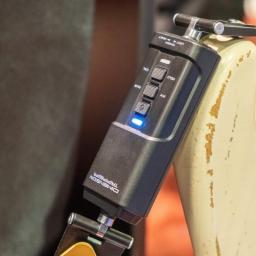 |
by Terrence O'Brien on (#6J67N)
NAMM is packed to the gills with synths, guitars, saxophones, et cetera. But, I promise you right now, the Dimension Tripper from Casio is the only wireless expression controller on the floor that you operate with your guitar strap.The concept is simple. It's an expression pedal. Just, not in pedal form. Now we've seen expression controllers in all sorts of shapes and sizes: Faders, rollers, even lasers. The Dimension Tripper does the same thing, except instead of rocking a pedal back and forth with your foot or sliding a fader back and forth with your hand, you pull down on your guitar itself.There are two parts to the system. The transmitter goes between the end of your strap and the strap button on your guitar. One end of it is retractable and, as you stretch it out it sends information over Bluetooth to the receiver. Under ideal conditions there is about 20ms of lag, but even on the floor at NAMM with all of the interference it was barely noticeable.The receiver is a relatively standard looking box that sits on your pedalboard and connects to your target pedal. A row of lights in the middle gives you visual feedback as you stretch out the sensor on the transmitter.Terrence O'Brien / EngadgetThe two parts are a bit bulkier than I would have expected, though. The receiver has two foot switches and is basically the size of a standard guitar pedal. The transmitter is nearly 5 inches long and is 1 inch thick. You will notice it when you play, and will need to shorten your strap significantly.Other than that, it works like any other expression controller. You can use it for energetic wah wah effects, or gentle volume swells or to crank up the weirdness on a ring modulator. It can even be used in place of a foot switch to turn on and off effect. So you could yank down hard at the start of the chorus to kick in an overdrive.Terrence O'Brien / EngadgetThe concept is definitely gimmicky. But I have to admit it's fun and actually felt kind of natural. Most players move their guitar a bit when anyway, and this just felt like an extension of that. I had to be a little more emphatic and move with more conviction than I might normally, but I adapted pretty quickly. Is it practical? Probably not. But kudos to Casio for trying something different.What's not clear is whether or not this will become an actual retail product. Right now Casio is running a crowdfunding campaign where you back the Dimension Tripper for 32,736 yen, or about $221. If the wireless expression controller has a life beyond that however is still up in the air.This article originally appeared on Engadget at https://www.engadget.com/casios-dimension-tripper-lets-you-control-your-guitar-pedals-with-your-guitar-strap-200039380.html?src=rss
|
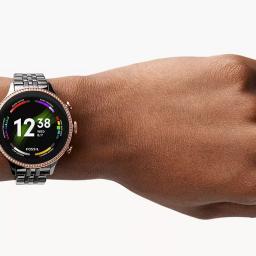 |
by Cheyenne MacDonald on (#6J65T)
Fossil is officially getting out of the smartwatch business. Following months of speculation about the future of its Wear OS smartwatch lineup, which hasn't seen a new model since 2021's Gen 6, the company confirmed to The Verge on Friday that it's abandoning the category altogether. There won't be a successor to the Gen 6, but existing Fossil smartwatches will still get updates for the next few years."In a statement to The Verge, a spokesperson said Fossil Group has made the strategic decision to exit the smartwatch business," citing the industry's evolving landscape. Fossil Group is redirecting resources to support our core strength and the core segments of our business that continue to provide strong growth opportunities for us: designing and distributing exciting traditional watches, jewelry, and leather goods under our own as well as licensed brand names."Fossil has been pretty quiet about its smartwatch plans lately, after an initial few years of steady releases, and the decision is going to come as a disappointment to anyone who's been holding out hope for a Gen 7. While they were known to struggle in the battery life department, Fossil smartwatches are some of the nicest looking out there.This article originally appeared on Engadget at https://www.engadget.com/fossil-is-done-making-smartwatches-but-will-keep-releasing-updates-for-a-few-years-161958128.html?src=rss
|
 |
by Mat Smith on (#6J646)
Sorry to interrupt your Saturday, but The Pokemon Company is aware it's being mocked and Apple isn't giving up on its dreams of making a car - it just might not be as impressive as first imagined. This week's YouTube-coated version of TMA covers both of those, we get sad about a moonlander that didn't really land properly and I try to name our new gaming video show. I tried. I didn't say I succeeded.This week:The Apple car apparently still existsElon Musk confirms a new low-cost Tesla model is coming Apple details how third-party app stores and payments will work in EuropeRead this:Wired headphones are coming back. Not in an LA-centric retro twist, but in a nerdy high-fidelity-they-actually-sound-better... way. James Trew explains how, with built-in DACs new wired headphone models make any phone Apple Music Hi-Res Lossless ready. And thus much better. If you can tell the difference.Like email more than video? Subscribe right here for daily reports, direct to your inbox.This article originally appeared on Engadget at https://www.engadget.com/the-morning-after-a-cheaper-tesla-apples-ev-project-140008585.html?src=rss
|
 |
by Mariella Moon on (#6J647)
In October 2023, 23andMe admitted that it suffered a data breach that compromised its users' information. The company has been hit with several lawsuits since then, and according to The New York Times, one of them is accusing 23andMe of failing to notify customers that they were specifically targeted for having Chinese and Ashkenazi Jewish heritage. They also weren't told that their test results with genetic information had been compiled in curated lists that were then shared on the dark web, the plaintiffs said. 23andMe recently released a copy of the letters it sent to affected customers, and they didn't contain any reference to the users' heritage.The lawsuit was filed in federal court in San Francisco after the company revealed that the hack had gone unnoticed for months. Apparently, the hackers started accessing customers' accounts using login details already leaked on the web in late April 2023 and continued with their activities until September. It wasn't until October that the company finally found out about the hacks. On October 1, hackers leaked the names, home addresses and birth dates of 1 million users with Ashkenazi Jewish ancestry on black hat hacking forum BreachForums.After someone responded to the post asking access to "Chinese accounts," the lawsuit said the poster linked to a file containing information on 100,000 Chinese users. The poster also said they had access to 350,000 Chinese profiles and could release more information if there was enough interest. In addition, the same poster allegedly returned to the forum in mid-October to sell data on "wealthy families serving Zionism" after the explosion at Al-Ahli Arab Hospital in Gaza."The current geopolitical and social climate amplifies the risks" to users whose data was exposed, according to the lawsuit, since the leaked information included their names and addresses. The plaintiffs want their case to be heard by a jury and are seeking compensatory, punitive and other damages.This article originally appeared on Engadget at https://www.engadget.com/lawsuit-says-23andme-hackers-targeted-users-with-chinese-and-ashkenazi-jewish-heritage-132423486.html?src=rss
|
 |
by Mariella Moon on (#6J5ZV)
ElevenLabs, an AI startup that offers voice cloning services with its tools, has banned the user that created an audio deepfake of Joe Biden used in an attempt to disrupt the elections, according to Bloomberg. The audio impersonating the president was used in a robocall that went out to some voters in New Hampshire last week, telling them not to vote in their state's primary. It initially wasn't clear what technology was used to copy Biden's voice, but a thorough analysis by security company Pindrop showed that the perpetrators used ElevanLabs' tools.The security firm removed the background noise and cleaned the robocall's audio before comparing it to samples from more than 120 voice synthesis technologies used to generate deepfakes. Pindrop CEO Vijay Balasubramaniyan told Wired that it "came back well north of 99 percent that it was ElevenLabs." Bloomberg says the company was notified of Pindrop's findings and is still investigating, but it has already identified and suspended the account that made the fake audio. ElevenLabs told the news organization that it can't comment on the issue itself, but that it's "dedicated to preventing the misuse of audio AI tools and [that it takes] any incidents of misuse extremely seriously."The deepfaked Biden robocall shows how technologies that can mimic somebody else's likeness and voice could be used to manipulate votes this upcoming presidential election in the US. "This is kind of just the tip of the iceberg in what could be done with respect to voter suppression or attacks on election workers," Kathleen Carley, a professor at Carnegie Mellon University, told The Hill. "It was almost a harbinger of what all kinds of things we should be expecting over the next few months."It only took the internet a few days after ElevenLabs launched the beta version of its platform to start using it to create audio clips that sound like celebrities reading or saying something questionable. The startup allows customers to use its technology to clone voices for "artistic and political speech contributing to public debates." Its safety page does warn users that they "cannot clone a voice for abusive purposes such as fraud, discrimination, hate speech or for any form of online abuse without infringing the law." But clearly, it needs to put more safeguards in place to prevent bad actors from using its tools to influence voters and manipulate elections around the world.This article originally appeared on Engadget at https://www.engadget.com/elevenlabs-reportedly-banned-the-account-that-deepfaked-bidens-voice-with-its-ai-tools-083355975.html?src=rss
|
 |
by Karissa Bell on (#6J5S9)
Instagram is testing yet another feature meant to give users an alternative to finstas. It's called flipside" and it allows people to create a secondary photo grid that only designated friends can see.If that sounds somewhat familiar it's probably because Instagram already makes it pretty easy for users to create posts intended for a more limited audience. The app added the ability for users to share grid posts with close friends" back in November (Stories for close friends has been a thing since 2018). More recently, it tested audience lists for Stories, so users could create multiple lists for small-group sharing. The app, of course, also makes it fairly easy to create an actual finsta.Flipside, somewhat confusingly, offers yet another way of doing essentially the same thing. Users create a separate list of friends, distinct from close friends," to add to their flipside." They can then choose to post to their main grid or to their flipside," which is also accessible from their profile but only visible to the aforementioned list of friends. People will know if they have access to someone's flipside if they see a key icon in someone's grid, according to screenshots shared on Threads. (You can see a video of it in action over on Threads.)
|
 |
by Jessica Conditt on (#6J5Q4)
Cities: Skylines II developer Colossal Order has a uniquely close relationship with its community. The original Cities: Skylines came out in 2015 and gobbled up the audience that was left behind by EA's SimCity, which came out in 2013 and was a busted mess. Cities: Skylines scratched that urban-planning itch, plus it cost just $30. The game came first to PC, Mac and Linux with modest hardware requirements, and it hit consoles within two years. Critically, Cities: Skylines also supported mods through the Steam Workshop, allowing players to add their own tools to the game and share those features with others.With Cities: Skylines, the audience grew in size and the modding took even a bigger role, allowing for a huge amount of creativity and inspiration for us devs," Colossal Order CEO Mariina Hallikainen told Engadget. Anything from quality-of-life improvements to ideas for DLC content, we have gathered a huge amount of information to help us create the game that Cities: Skylines is today."Colossal Order and its publisher, Paradox Interactive, continued to support Cities: Skylines with consistent game updates and DLC drops, and its mod community continued to grow. The game picked up a ton of new players during the pandemic in 2020, and around that time, a number of now-prominent content creators leaned into Cities: Skylines for streams and videos.In the months before the launch of Cities: Skylines II in October 2023, Colossal Order partnered with a handful of content creators and gave them access to bits of the game early, so they could create YouTube videos showing off specific features each week. These partners included Biffa, two dollars twenty, YUMBL, Infrastructurist and City Planner Plays. City Planner Plays has a clever edge in this space - Philip, the man behind the builds, worked as an urban planner for more than a decade, and his videos often include insights about how real-life cities are designed. He started his channel in mid-2020, and today he's a dedicatedCities: Skylines streamer and video editor with nearly 650,000 subscribers on YouTube. Like many other community members, he has a history with Colossal Order that spans years.Prior to the Cities: Skylines II release, I think that most everyone in the community viewed them incredibly positively, looking at them as one of us' and the type of developer that you want making a game that you love," Philip said. They were viewed as responsive and generous. ...I can't recall a bad thing being said about them."That's exactly what made Hallikainen's blog post on January 15th so surprising.We have seen a growing tendency of toxicity in our community, something we have not experienced to this extent before," Hallikainen wrote, clarifying that the negativity was being directed at developers and players alike. She continued, We have always treasured having the devs present on the different social platforms and having direct communication with the community, but our biggest responsibility will always be protecting the team."Tensions have been high in the Cities: Skylines community since the launch of the sequel in October. Though the game was originally pitched as a simultaneous PC and console release, it's only available on PC and there's no concrete timeline for when the other versions will come out. On top of that, Colossal Order raised the game's minimum and recommended specs just a month before release, and the new requirements placed it out of reach for a large chunk of players.Colossal OrderEven with a capable rig, the game is riddled with visual and mechanical bugs. Philip said Cities: Skylines II strained his RTX 4090 graphics card, making it run at 100 percent on the main menu, and he couldn't play in 4K at launch because the game was so GPU-bound.Simply put, it feels like the game needed more time in development.Since the launch of Cities: Skylines II, things have without a doubt gotten more prickly," Philip said. While many people have been appreciative of Colossal Order's transparency with the weekly updates as well as the frequent bug fixes, many appear to view Colossal Order as being all-too-willing to release a game that wasn't ready to be released."Hallikainen acknowledged that the game is missing some promised and highly publicized features, like mod support.Naturally we're disappointed we weren't able to achieve everything we aimed for, but it's fantastic to have the game finally out and continue working on it with more openness," she said.The issue, as far as Colossal Order sees it, lies in the community's response to Cities: Skylines II. Players have been venting on social media and in the Steam and Paradox forums, and the feedback has risen to toxic levels, according to Hallikainen. She cites a surge in personal attacks on developers and other players.Colossal OrderCities: Skylines II attracted a lot of attention and very high expectations were set," she said. When the game did not fulfill all the promises, it was natural to cause frustration in the audience. However, the shortcomings should spark a conversation on ideas for improvement, constructive feedback and respectful discussions in the community."For City Planner Plays and other community members, the issue is the game itself. Where Colossal Order sees toxicity, Philip sees justified frustration.I will admit that I was taken aback by this description of what's happening in the Cities: Skylines community regarding Cities: Skylines II," he said. I have noticed increased negativity. However, I wouldn't say that I have noticed increased toxicity. And bluntly, I think the negativity is completely understandable and predictable."Philip identified four factors driving the negative sentiment: The game is only on PC, it's buggy and unplayable on many common hardware configurations, there's no official support for mods, and Colossal Order hasn't held itself accountable for the game's blunders.Colossal Order has been transparent, talking with the community, but has not taken accountability for the release of the game," Philip said. I hear this over and over again. Many players appear to want them to admit that the release state of the game was poor, say that they are sorry, and make some gesture to make amends. To date, they have delayed the DLC release - which actually was a huge negative for people that purchased the Ultimate Edition of the game - but not made amends. [They haven't] provided the information that people are looking for."Colossal OrderThe biggest misstep on Philip's list is the lack of mods. Colossal Order is planning to add an official pipeline for mods directly through Paradox, rather than Steam Workshop, which was the home for mods in Cities: Skylines. Shifting to an in-house modding platform will ensure parity across all platforms, bringing mods to consoles and players outside of Steam. However, the Cities: Skylines mod community was built on Steam Workshop, a popular and easy-to-use platform, and with the delay of the console release, the current player base is simply being inconvenienced.The maps that come with the game aren't great - incredibly high difficulty level, unforgiving weather - and many basic features need refinement," Philip said. Mods offered that opportunity and they aren't available just yet. Worst of all, early messaging made it seem like modding was around the corner, weeks after launch, [but it's been delayed] to some undetermined time in Q2 of 2024."Collaboration with the community is what made the original game so successful, and the sequel could certainly benefit from crowdsourced improvements. For now, some players are using a third-party tool to make mods work in Cities: Skylines II.The tech is new, the simulation has been entirely rewritten and the game has all the potential to become the city-builder of this decade," Hallikainen said. What we failed in was to get the modding support available for the release, and we're doing our best to catch up. We have been delighted to see the modding community has not waited for us, but are already creating amazing mods for the game."Paradox InteractiveThis is only the beginning for Cities: Skylines II. Colossal Order has plans to support and expand the game over the next 10 years. The original Cities: Skylines didn't have all of the bells, whistles and mods when it first came out in 2015, and the sequel is starting in a similar position. Colossal Order sees Cities: Skylines II as a fresh foundation, but its core community expected a more complete experience.The feedback we've gotten from the content creators and modders has immensely helped us in heading in the right direction, and we love working in cooperation with different parties," Hallikainen said. There's a lot of work to be done and we plan to keep going for the next decade."Cities: Skylines II has improved significantly in the months since launch, thanks to a slew of updates from Colossal Order. It's on the right track. Colossal Order continues to publish updates on the game's progress each week, but it'll take time - and maybe an apology, a plan and free in-game perks - to rewrite the narrative around Cities: Skylines II.I think the most toxic' people right now are the game's biggest fans," Philip said. And bluntly, they are just disappointed that the game doesn't run well for them or that they can't play it at all. They're disappointed and lashing out, which isn't right. But to me, that means that there is a path to repair the issues if the game is fully fixed and accountability is taken."This article originally appeared on Engadget at https://www.engadget.com/whats-up-with-the-toxicity-around-cities-skylines-ii-213034938.html?src=rss
|
by Kris Holt on (#6J5Q5)
A live-action TV series based on Final Fantasy 14 is no longer happening. The project is now dead, according to Dinesh Shamdasani, the co-founder of Hivemind, one of the production companies involved."We took around a fantastic pilot script by Ben Lustig and Jake Thornton along with a multi-season plan they built with our show runners but got rejected across the board," Shamdasani wrote on X, as spotted by Eurogamer. "The size and scale needed to do it right proved too much for anyone to want to risk."Amazon, which spent a billion dollars on a Lord of the Rings TV show that drew large viewership figures but barely made a dent in the cultural zeitgeist, seemingly came closest to spinning up the project. Evidently, it decided against getting on board.
 |
by Will Shanklin on (#6J5H3)
The Samsung Galaxy S24 isn't taking Google's Gemini AI with it to China. CNBC reported Friday that the Chinese version of the flagship phone uses Baidu's Ernie chatbot to power the phone's AI-powered features. Ernie arrived last August after reportedly receiving Chinese government approval.Now featuring Ernie's understanding and generation capabilities, the upgraded Samsung Note Assistant can translate content and also summarize lengthy content into clear, intelligently organized formats at the click of a button, streamlining the organization of extensive text," Baidu and Samsung told CNBC in a joint statement.Samsung's description of the Galaxy S24 series on its Chinese website advertises many of the same Google-powered features it debuted last week in its San Jose, CA, launch event. These include a version of Circle to Search, real-time call translation, a transcription helper and a photo assistant. The Chinese Galaxy S24 product pages don't have any references to Google, which has limited operations in the country.SamsungA recent report suggests Apple recently ended Samsung's 14-year run as the global smartphone shipment leader. In addition, IDC published data this week suggesting the iPhone maker claimed the top spot in the Chinese market (with a 17.3-percent market share) for the first time in 2023. Samsung didn't make the top five.Engadget has tried the Galaxy S24 series, including the standard, Plus and Ultra variants. Samsung's 2024 flagship phone lineup launches in the US on January 31.This article originally appeared on Engadget at https://www.engadget.com/samsungs-ai-features-on-the-galaxy-s24-in-china-reportedly-ditch-google-for-baidu-174503505.html?src=rss
|
 |
by Kris Holt on (#6J5H4)
To the surprise of just about everyone - seemingly including the studio behind it - virtual reality game Ultrawings 2 has hit PlayStation VR2 earlier than expected. Developer Bit Planet Games wrote on X that "shadow dropping Ultrawings 2 on PS VR2 today was not on our 2024 bingo card but, well, here we are." (A shadow drop refers to a surprise release of a product as soon as it's announced, like Hi-Fi Rush.)It's unclear exactly how Ultrawings 2, which debuted on Steam and Meta Quest in 2022, arrived on PS VR2 ahead of schedule. Bit Planet had wanted to bring the aerial adventure title to that platform by the end of 2023 but was unable to. It instead promised to release Ultrawings 2 on PS VR2 early this year. On January 9, Bit Planet noted it had started the submission process.
|
 |
by Terrence O'Brien on (#6J5H5)
The MicroKorg 2 has some big britches to fill. The original MicroKorg is one of, if not the best selling synthesizer of all time. It's also probably the longest continuously manufactured synth, having hit the market in 2002. Of course, technology has advanced quite a lot in the last 22 years and it was time to give what is arguably the first classic synth of the 21st century an update.The new version that Korg announced just ahead of NAMM 2024 stays largely true to the original design. It's small, but solidly built. The mini keys might bother those with sausage fingers, but my slightly smaller than average hands didn't have much issue. I did occasionally miss my mark slightly, but that has as much to do with my terrible keyboard skills as it does the compact keybed. The keybed itself is fine. Nothing to write home about, that's for sure. But it's also not worth getting up in arms about. I've played plenty worse.The knobs and buttons, even on this prototype felt solid. And the big rotary knob, which is kind of what gives a MicroKorg its visual identity, has very satisfying detents as you change the genre of your patch selection. While there are big signs in the Korg booth proclaiming that the MicroKorg 2 is still a prototype, the hardware already feels quite refined.Even the interface seems like its at least nearly complete. The screen itself is bright and colorful with decent viewing angles. It did get a little washed out at extreme angles under the glare of the Anaheim Convention Center's lights, but it's unlikely to cause an issue in regular use.Terrence O'Brien / EngadgetThe UI is already looking pretty nice, with some stylish animations as you change parameters. And changing parameters is a lot easier than it was on the original MicroKorg, which had two edit selection knobs and a table you needed to look up what the five knobs across the top were controlling. On the MicroKorg 2 things are much quicker. For example, pressing the button below the second knob cycles through the settings for oscillator one, two, three and the noise source. And the screen tells you what parameters are assigned to those knobs, depending on the page you've selected.It's hardly knob per function but it could be much worse.Terrence O'Brien / EngadgetThe one area where it was obvious that the MicroKorg 2 was still in prototype stage was in the presets. There were only eight preprogrammed into the unit I tried. And the NAMM show floor wasn't exactly the ideal environment to do deep sound design.I did kick the tires on it a bit though, and was pretty quickly able to throw together a couple of decent sounding patches. And the handful of presets that Korg did have ready to go were bright and loaded with character. They were decidedly digital but didn't feel clinical. Unfortunately the convention hall was even less conducive to testing out the vocoder and harmonizer features. It was just impossible to get a clean enough signal with all the cacophony going on around me.Terrence O'Brien / EngadgetIn general the eight-voice (or four-voice in bi-timbral mode), three-oscillator synth engine seems like a big upgrade from the original. It's got not just your standard virtual analog waves, but a selection of single cycle waveforms and even samples that can be combined to create relatively complex sounding patches.The one thing that the original has over its successor though is price. Where you can still go pick up a MicroKorg from most music retailers for $430, the MicroKorg 2 will set you back $699 when it goes on sale later this year.This article originally appeared on Engadget at https://www.engadget.com/the-microkorg-2-hands-on-a-stylish-update-to-an-iconic-digital-synthesizer-173034308.html?src=rss
|
 |
by Amy Skorheim on (#6J5H6)
We've reached the end of another week, so it's time for a roundup of the best deals we could find on tech we like. Happily, a couple of the items we saw at CES (and named among the best) are already seeing decent discounts. So those who want to smoke meat indoors or invest in home back up batteries are in luck. As for smaller gadgets, we saw a deal on our favorite Bluetooth tracker, found a sale on Anker batteries and chargers and noted that Apple's AirPods Pro (which will work with the upcoming Vision Pro) are still hovering at their all-time low price. This also may be the last week to take advantage of pre-order promotions on the soon-to-be-released Samsung Galaxy S24 smartphones. Here are the best tech deals from this week that you can still get today.Follow @EngadgetDeals on Twitter and subscribe to the Engadget Deals newsletter for the latest tech deals and buying advice.This article originally appeared on Engadget at https://www.engadget.com/amazons-2023-echo-show-8-is-back-to-90-plus-the-rest-of-this-weeks-best-tech-deals-171619129.html?src=rss
|
 |
by Lawrence Bonk on (#6J5H7)
George Carlin's estate has filed a lawsuit against the makers of an hour-long comedy special featuring an AI replica of the comedian, as reported by NBC News. The late comedian's estate, including his daughter Kelly Carlin, filed the suit in a Los Angeles federal court last night. It claims the online media company that posted the video, Dudesy, violated the performer's right to publicity and infringed on a copyright.The video's called George Carlin: I'm Glad I'm Dead" and features an hour of new material" by the comedian, who died in 2008. As AI replications go, it's certainly not going to break any records. It's audio only and, honestly, doesn't even sound that much like Carlin. It sounds like a below average impression of the comedian. Also, it's very, very bad. Carlin had an extremely unique voice and this video is mostly basic punchlines you can see coming from a mile away. There's very little outlandish wordplay. There's no righteous fury. There are, however, a lot of jokes comparing Donald Trump to poop."I understand and share the desire for more George Carlin. I, too, want more time with my father. But it is ridiculous to proclaim he has been resurrected' with AI," Kelly Carlin wrote in a statement. She went on to write that the Carlin in that video is a poorly-executed facsimile cobbled together by unscrupulous individuals."The estate's attorney, Josh Schiller, went on to warn that AI risked becoming "a tool that allows bad-faith actors to replace creative expression, to exploit the already existing work of creators, and to get rich at the expense of others."Dudesey, the channel that created and posted the video, is actually run by the popular comedian Will Sasso and author Chad Kultgen. They didn't write the material here. The AI was trained on thousands of hours of Carlin routines to create the facsimile, according to a report by NPR. Sasso and Kultgen are, however, named in the suit. The pair behind Dudesy liken the AI-created Carlin to an impressionist who impersonates a public figure.Sasso suggested in a podcast last week that the AI version was no replacement for the real thing, going on to say that it was interesting how heated people get about it." The lawsuit calls the video a piece of computer-generated click-bait which detracts from the value of Carlin's comedic works and harms his reputation."The complaint seeks unspecified damages and the immediate removal of any video or audio copies" of the hour-long special. So, if you're curious to hear a pretty bad Carlin impression make obvious jokes about Taylor Swift, you had better get on that while you have the chance.Of course, this is just the latest salvo in the ongoing war between AI algorithms and humans that create works of value. This issue was at the very heart of last year's Hollywood writers' strike and the recent spate of AI-created celebrities used to scam consumers. This is just the beginning. It's an election year, after all, and bad actors have already used an AI replication of President Biden's voice to urge New Hampshire residents not to vote in last week's primary.This article originally appeared on Engadget at https://www.engadget.com/george-carlins-estate-sues-over-ai-generated-comedy-special-170333368.html?src=rss
|
 |
by Malak Saleh on (#6J5H8)
Swedish electric car company Polestar is slashing its workforce by 15 percent globally. About 450 employees are expected to be let go due to challenging market conditions." The news comes despite its six percent increase in global car deliveries compared to 2022, according to its recent fourth quarter global fiscal report.The company did, however, warn that it would reduce its headcount back in May 2023 which was around the same time it announced its production goals were disappointingly off by 10,000 to 20,000 cars from its initial goal. Polestar defended its decisions and explained it was intensifying its focus" on cutting costs to make the business more efficient.Despite delays in shipments last year, the 2024 Polestar 2 lineup is coming in strong with a suite of new upgrades, including longer mileage and faster charging. However, the company is faced with the issue that buyers might be turned off by its nearly $50,000 price tag when they can get newer models produced by rivals like Tesla for more than $10,000 less.Job cuts across the EV sector have become commonplace, with rivals like Lucid Motors' announcement to cut 18 percent of its workforce last year and Rivian slashing six percent. These trends might be due to the fact that supply chain issues are a huge problem in the EV industry, coupled with buyer hesitancy to invest in electric cars.This article originally appeared on Engadget at https://www.engadget.com/ev-maker-polestar-cuts-15-percent-of-its-workforce-globally-154941678.html?src=rss
|
 |
by Daniel Cooper on (#6J5DP)
Last year, the European Union implemented new laws to make big tech open up its platforms to competitors. The deadline for compliance is March, and all eyes were on how Apple, which is famous for not playing nicely with others, would react. Now the company has set out how it will comply with the law, and the result is the sort of malicious compliance everyone was expecting. Similarly, the reaction from the coalition of well-heeled critics who were all hoping to get a slice of Apple's pie for free has been similarly predictable.The Digital Markets ActIn 2023, the EU laid down a new regime to prevent big tech throwing all of its weight around in the bloc. The Digital Markets Act and Digital Services Act govern what it calls gatekeepers," the big platforms who get between users and businesses. That includes Meta, Alphabet, Apple, Amazon and (TikTok owner) ByteDance, who all have big user bases, deep pockets and a lot of power. One key provision of the law was to get platform holders like Apple and Google to open their systems and allow competing services, such as alternative app stores, a topic we covered in depth back in 2020.On January 25, Apple published a statement explaining how the DMA would impact iOS, Safari and the App Store. The document is laced with references to how the law makes iOS less secure and that Apple needs to take steps to mitigate those risks. And while Apple does not say how much each part of its business makes specifically, the App Store is a key part of its services division which earned a combined $22 billion in its most recent quarter. Consequently, Apple will happily let you set up a competing iOS app store, but in order to do so, you will have to vault Mount Everest, dig a tunnel to the center of the Earth and front a million dollars in cash.Okay, not quite that.You can compete, but you won't want toThe creators of a would-be rival app store can't simply turn up and sell their wares without any oversight. It was obvious from the get-go that even if Apple did open up its platforms, no third party app store would be allowed to do an end-run around the company's basic rules. If you were hoping to run Honest Doug's App Store (Not A Scam) and take the world for a ride, then you're out of luck.Would-be rivals will still need to meet Apple's Notarization requirements and have tight rules and moderation tools governing quality, piracy, fraud and payment disputes. (Notarization will mean these apps will be checked by Apple to look for known malware", with the ability to shut the app down if any is detected.) They will need key rules around data collection and to offer users the same level of control they enjoy in the App Store proper. Not to mention complying with the Digital Services Act, GDPR and a number of other acronym-heavy EU regulations around digital services and online privacy. Essentially, if you want to run your own App Store, you'll need to do it to the same level that Apple does.Apple has also said app stores need to ensure they can meet their obligation to pay app developers. In this case, it means sharing a letter from a top financial institution with proof they have access to a minimum of 1,000,000 (around $1.1 million) in credit. And to avoid third party app stores taking advantage of Apple's platform without Apple benefiting, developers will need to pay a Core Technology Fee once an app has been downloaded more than a million times. This is a per-install fee of 0.50 (around 54 cents) which renews every 12 months the app is installed for. You can decide for yourself if this reminds you of Unity's aborted Runtime Fee payment scheme.At the present time, Apple charges developers either $99 or $299, depending on if they are for an individual or a company. Apple then takes a flat commission on any transaction, either to buy the app itself or with an in-app purchase. For small developers making less than $1 million per year, Apple takes a 15 percent cut, while bigger names pay 30 percent. There are exceptions, including reader" apps which are downloaded for free and tie to subscriptions elsewhere. So far it's not clear under what circumstances the sideloading fees might be preferable (if ever) to the vanilla "Apple tax" through its proprietary storefront.The expected responseNaturally, Apple's statement and all of the explanatory detail in its developer notes was controversial. Its critics, many of whom feel that Apple has too much power over its platform, were incensed.Epic Games CEO Tim Sweeney, who has previously sued the company about this matter, was quick to denounce the changes. He said the new rules were a devious new instance of malicious compliance." Adding that it is forcing app developers to pick between App Store exclusivity or an anticompetitive scheme rife with new junk fees on downloads and new Apple taxes on payments they don't process."The Coalition for App Fairness, a lobby group backed by Epic, Spotify and Match Group, was quick to support one of its biggest backers. Executive director and former Republican spokesperson Rick Vanmeter said Apple had no intention" to comply with the DMA. And added the move was a shameless insult to the European Commission and the millions of European consumers they represent," and urged officials to reject the move.Despite Sweeney's personal objection and that of his lobbyists, Epic Games has already said Fortnite - which was pulled from the Apple Store when Epic deliberately violated Apple's Terms of Service - will return to iOS. The company said it would launch its own Epic Games Store for iOS in 2024, through which it would distribute its own titles. It added in the announcement tweet it would continue to argue to the courts and regulators that Apple is breaking the law."But it's not just Apple's well-heeled rivals who feel the company is thumbing its nose at the EU with these changes. Andy Yen, the founder of privacy service Proton, told Engadget that Apple's compliance with the DMA is done in bad faith," and that the iPhone maker is fighting tooth and nail to maintain its profits and monopoly." Yen added that the strings attached to Apple's new policies mean that in practice it will be impossible for developers to benefit from them." And that the moves erode the fundamental rights of users by giving Apple the ability to review apps downloaded outside the App Store." He added that the European Commission can't let this blatant bending of the rules fly."But despite the chorus of calls demanding the European Commission to Do Something, the body hasn't budged just yet. We take note of Apple's announcements ahead of the compliance deadline," a commission spokesperson told Engadget We do not comment on these announcements." The spokesperson added they strongly encourage designated gatekeepers to test their proposals with third parties." And that these comments were without prejudice to the Commission's own assessment of these proposals."At the time of writing, there has not yet been a comment from any high-profile EU figures about the matter. European Commission President Ursula von der Leyen and Margrethe Vestager, who handles technology and competition matters, have been active on social media but not about this topic. Similarly, we are waiting to hear back from Spotify and Deezer, who have both previously urged the European Union to act. Not to mention that, before Apple's announcement, Spotify published its own announcement saying it will offer app downloads directly from its site.This article originally appeared on Engadget at https://www.engadget.com/apples-rivals-arent-happy-about-its-eu-app-store-changes-160032585.html?src=rss
|
 |
by Kris Holt on (#6J5DQ)
The National Security Agency's director has confirmed that the agency buys Americans' web browsing data from brokers without first obtaining warrants. Senator Ron Wyden (D-OR) blocked the appointment of the NSA's inbound director Timothy Haugh until the agency answered his questions regarding its collection of Americans' location and Internet data. Wyden said he'd been trying for three years to publicly release the fact that the NSA is purchasing Americans' internet records."In a letter dated December 11, current NSA Director Paul Nakasone confirmed to Wyden that the agency does make such purchases from brokers. "NSA acquires various types of [commercially available information] for foreign intelligence, cybersecurity, and other authorized mission purposes, to include enhancing its signals intelligence (SIGINT) and cybersecurity missions," Nakasone wrote. "This may include information associated with electronic devices being used outside and, in certain cases, inside the United States."Nakasone went on to claim that the NSA "does not buy and use location data collected from phones known to be used in the United States either with or without a court order. Similarly, NSA does not buy and use location data collected from automobile telematics systems from vehicles known to be located in the United States."An NSA spokesperson told Reutersthat the agency uses such data sparingly but that it has notable value for national security and cybersecurity purposes. "At all stages, NSA takes steps to minimize the collection of US [personal] information, to include application of technical filters," the spokesperson said.Wyden has called the practice unlawful. "Such records can identify Americans who are seeking help from a suicide hotline or a hotline for survivors of sexual assault or domestic abuse," he said.The senator urged Director of National Intelligence Avril Haines to order US intelligence agencies to stop buying Americans' private data without consent. He also asked Haines to direct intelligence agencies to "conduct an inventory of the personal data purchased by the agency about Americans, including, but not limited to, location and internet metadata." Wyden said that any data that does not comply with Federal Trade Commission standards regarding personal data sales should be deleted.Wyden pointed to an FTC settlement that this month banned a data broker from selling location data. The agency alleged that the information, which it claimed was sold to buyers including government contractors, "could be used to track people's visits to sensitive locations such as medical and reproductive health clinics, places of religious worship and domestic abuse shelters."The FTC stated in its complaint against the broker, formerly known as X-Mode Social, that by "failing to fully inform consumers how their data would be used and that their data would be provided to government contractors for national security purposes, X-Mode failed to provide information material to consumers and did not obtain informed consent from consumers to collect and use their location data."The settlement was the first of its kind with a data broker. In a statement, Wyden, who has been investigating the data broker industry for several years, said he was "not aware of any company that provides such a warning to users [regarding their consent] before collecting their data."The issue of US federal agencies buying phone location data isn't exactly new. In 2020, it emerged that Customs and Border Protection had been doing so. The following year, Wyden claimed the Defense Intelligence Agency and the Pentagon bought and used location data from Americans' phones.This article originally appeared on Engadget at https://www.engadget.com/nsa-admits-to-buying-americans-web-browsing-data-from-brokers-without-warrants-154904461.html?src=rss
|
 |
by Lawrence Bonk on (#6J5DR)
Tesla is recalling 200,000 vehicles in the US due to a malfunctioning backup camera. There were reports that the cameras wouldn't engage when the cars were in reverse, which is a pretty big safety issue and the whole point of those cameras in the first place. Tesla has processed 81 warranty claims potentially related to the issue, according to Autoblog.The recall includes certain Model Y, Model S, and Model X vehicles from 2023. Tesla says it delivered 1.8 million vehicles in 2023, so this recall accounts for more than 10 percent of the company's yearly output. The US National Highway Traffic Safety Administration (NHTSA) released a statement on the matter and said that a software issue was to blame for the problem, according to Reuters.To that end, all of the recalled vehicles feature Tesla's Full Self-Driving" computer 4.0 and run software version 2023.44.30 through 2023.44.30.6, or 2023.44.100. Tesla owners can check to see what software versions they're running. The company has released an over-the-air (OTA) software update to fix the glitch, according to the NHTSA.Tesla became aware of the problem in December and decided on a recall on January 12. Customers will receive a letter alerting them to the problem by March 22. The company says that it's not aware of any crashes, injuries or deaths associated with the malfunction.This latest recall comes just six weeks after Tesla recalled over two million vehicles after serious safety issues regarding its Autopilot advanced driver-assistance system. That was also addressed via an OTA software update.This article originally appeared on Engadget at https://www.engadget.com/tesla-recalls-200000-vehicles-because-of-a-faulty-backup-camera-153302523.html?src=rss
|
 |
by Devindra Hardawar on (#6J5DS)
A woman has a text chat with her long-dead lover. A family gets to hear a deceased elder speak again. A mother gets another chance to say goodbye to her child, who died suddenly, via a digital facsimile. This isn't a preview of the next season of Black Mirror - these are all true stories from the Sundance documentary Eternal You, a fascinating and frightening dive into tech companies using AI to digitally resurrect the dead.It's yet another way modern AI, which includes large language models like ChatGPT and similar bespoke solutions, has the potential to transform society. And as Eternal You shows, the AI afterlife industry is already having a profound effect on its early users.The film opens on a woman having a late night text chat with a friend: "I can't believe I'm trying this, how are you?" she asks, as if she's using the internet for the first time. "I'm okay. I'm working, I'm living. I'm... scared," her friend replies. When she asks why, they reply, "I'm not used to being dead."Beetz Brothers Film ProductionIt turns out the woman, Christi Angel, is using the AI service Project December to chat with a simulation of her first love, who died many years ago. Angel is clearly intrigued by the technology, but as a devout Christian, she's also a bit spooked out by the prospect of raising the dead. The AI system eventually gives her some reasons to be concerned: Cameroun reveals that he's not in heaven, as she assumes. He's in hell."You're not in hell," she writes back. "I am in hell," the AI chatbot insists. The digital Cameroun says he's in a "dark and lonely" place, his only companions are "mostly addicts." The chatbot goes on to say he's currently haunting a treatment center and later suggests "I'll haunt you." That was enough to scare Angel and question why she was using this service in the first place.While Angel was aware she was talking to a digital recreation of Cameroun, which was based on the information she provided to Project December, she interacted with the chatbot as if she was actually chatting with him on another plane of existence. That's a situation that many users of AI resurrection services will likely encounter: Rationality can easily overwhelm your emotional response while "speaking" with a dead loved one, even if the conversation is just occurring over text.In the film, MIT sociologist Sherry Turkle suggests that our current understanding of how AI affects people is similar to our relationship with social media over a decade ago. That makes it a good time to ask questions about the human values and purposes it's serving, she says. If we had a clearer understanding of social media early on, maybe we could have pushed Facebook and Twitter to confront misinformation and online abuse more seriously. (Perhaps the 2016 election would have looked very different if we were aware of how other countries could weaponize social media.)Beetz Brothers Film ProductionEternal You also introduces us to Joshua Barbeau, a freelance writer who became a bit of an online celebrity in 2021 when The San Francisco Chronicle reported on his Project December chatbot: a digital version of his ex-fiancee Jessica. At first, he used Project December to chat with pre-built bots, but he eventually realized he could use the underlying technology (GPT-3, at the time) to create one with Jessica's personality. Their conversations look natural and clearly comfort Barbeau. But we're still left wondering if chatting with a facsimile of his dead fiancee is actually helping Barbeau to process his grief. It could just as easily be seen as a crutch that he feels compelled to pay for.It's also easy to be cynical about these tools, given what we see from their creators in the film. We meet Jason Rohrer, the founder and Project December and a former indie game designer, who comes across as a typical techno-libertarian."I believe in personal responsibility," he says, after also saying that he's not exactly in control of the AI models behind Project December, and right before we see him nearly crash a drone into his co-founders face. "I believe that consenting adults can use that technology however they want and they're responsible for the results of whatever they're doing. It's not my job as the creator of the technology to prevent the technology from being released, because I'm afraid of what somebody might do with it."But, as MIT's Turkle points out, reanimating the dead via AI introduces moral questions that engineers like Rohrer likely aren't considering. "You're dealing with something much more profound in the human spirit," she says. "Once something is constituted enough that you can project onto it, this life force. It's our desire to animate the world, which is human, which is part of our beauty. But we have to worry about it, we have to keep it in check. Because I think it's leading us down a dangerous path."Beetz Brothers Film ProductionAnother service, Hereafter.ai, lets users record stories to create a digital avatar of themselves, which family members can talk to now or after they die. One woman was eager to hear her father's voice again, but when she presented the avatar to her family the reaction was mixed. Younger folks seemed intrigue, but the older generation didn't want any part of it. "I fear that sometimes we can go too far with technology," her father's sister said. "I would just love to remember him as a person who was wonderful. I don't want my brother to appear to me. I'm satisfied knowing he's at peace, he's happy, and he's enjoying the other brothers, his mother and father."YOV, an AI company that also focuses on personal avatars, or "Versonas," wants people to have seamless communication with their dead relatives across multiple channels. But, like all of these other digital afterlife companies, it runs into the same moral dilemmas. Is it ethical to digitally resurrect someone, especially if they didn't agree to it? Is the illusion of speaking to the dead more helpful or harmful for those left behind?The most troubling sequence in Eternal You focuses on a South Korean mother, Jang Ji-sun, who lost her young child and remains wracked with guilt about not being able to say goodbye. She ended up being the central subject in a VR documentary, Meeting You, which was broadcast in South Korea in early 2020. She went far beyond a mere text chat: Jang donned a VR headset and confronted a startlingly realistic model of her child in virtual reality. The encounter was clearly moving for Jang, and the documentary received plenty of media attention at the time."There's a line between the world of the living and the world of the dead," said Kim Jong-woo, the producer behind Meeting You. "By line, I mean the fact that the dead can't come back to life. But people saw the experience as crossing that line. After all, I created an experience in which the beloved seemed to have returned. Have I made some huge mistake? Have I broken the principle of humankind? I don't know... maybe to some extent."Eternal You paints a haunting portrait of an industry that's already revving up to capitalize on grief-stricken people. That's not exactly new; psychics and people claiming to speak to the dead have been around for our entire civilization. But through AI, we now have the ability to reanimate those lost souls. While that might be helpful for some, we're clearly not ready for a world where AI resurrection is commonplace.This article originally appeared on Engadget at https://www.engadget.com/sundance-documentary-eternal-you-shows-how-ai-companies-are-resurrecting-the-dead-153025316.html?src=rss
|
 |
by Daniel Cooper on (#6J5DT)
If there's one thing we can all agree upon, it's that the 21st century's captains of industry are trying to shoehorn AI into every corner of our world. But for all of the ways in which AI will be shoved into our faces and not prove very successful, it might actually have at least one useful purpose. For instance, by dramatically speeding up the often decades-long process of designing, finding and testing new drugs.Risk mitigation isn't a sexy notion but it's worth understanding how common it is for a new drug project to fail. To set the scene, consider that each drug project takes between three and five years to form a hypothesis strong enough to start tests in a laboratory. A 2022 study from Professor Duxin Sun found that 90 percent of clinical drug development fails, with each project costing more than $2 billion. And that number doesn't even include compounds found to be unworkable at the preclinical stage. Put simply, every successful drug has to prop up at least $18 billion waste generated by its unsuccessful siblings, which all but guarantees that less lucrative cures for rarer conditions aren't given as much focus as they may need.Dr. Nicola Richmond is VP of AI at Benevolent, a biotech company using AI in its drug discovery process. She explained the classical system tasks researchers to find, for example, a misbehaving protein - the cause of disease - and then find a molecule that could make it behave. Once they've found one, they need to get that molecule into a form a patient can take, and then test if it's both safe and effective. The journey to clinical trials on a living human patient takes years, and it's often only then researchers find out that what worked in theory does not work in practice.The current process takes more than a decade and multiple billions of dollars of research investment for every drug approved," said Dr. Chris Gibson, co-founder of Recursion, another company in the AI drug discovery space. He says AI's great skill may be to dodge the misses and help avoid researchers spending too long running down blind alleys. A software platform that can churn through hundreds of options at a time can, in Gibson's words, fail faster and earlier so you can move on to other targets."CellProfiler / Carpenter-Singh laboratory at the Broad InstituteDr. Anne E. Carpenter is the founder of the Carpenter-Singh laboratory at the Broad Institute of MIT and Harvard. She has spent more than a decade developing techniques in Cell Painting, a way to highlight elements in cells, with dyes, to make them readable by a computer. She is also the co-developer of Cell Profiler, a platform enabling researchers to use AI to scrub through vast troves of images of those dyed cells. Combined, this work makes it easy for a machine to see how cells change when they are impacted by the presence of disease or a treatment. And by looking at every part of the cell holistically - a discipline known as omics" - there are greater opportunities for making the sort of connections that AI systems excel at.Using pictures as a way of identifying potential cures seems a little left-field, since how things look don't always represent how things actually are, right? Carpenter said humans have always made subconscious assumptions about medical status from sight alone. She explained most people may conclude someone may have a chromosomal issue just by looking at their face. And professional clinicians can identify a number of disorders by sight alone purely as a consequence of their experience. She added that if you took a picture of everyone's face in a given population, a computer would be able to identify patterns and sort them based on common features.This logic applies to the pictures of cells, where it's possible for a digital pathologist to compare images from healthy and diseased samples. If a human can do it, then it should be faster and easier to employ a computer to spot these differences in scale so long as it's accurate. You allow this data to self-assemble into groups and now [you're] starting to see patterns," she explained, when we treat [cells] with 100,000 different compounds, one by one, we can say here's two chemicals that look really similar to each other.'" And this looking really similar to each other isn't just coincidence, but seems to be indicative of how they behave.In one example, Carpenter cited that two different compounds could produce similar effects in a cell, and by extension could be used to treat the same condition. If so, then it may be that one of the two - which may not have been intended for this purpose - has fewer harmful side effects. Then there's the potential benefit of being able to identify something that we didn't know was affected by disease. It allows us to say, hey, there's this cluster of six genes, five of which are really well known to be part of this pathway, but the sixth one, we didn't know what it did, but now we have a strong clue it's involved in the same biological process." Maybe those other five genes, for whatever reason, aren't great direct targets themselves, maybe the chemicals don't bind," she said, but the sixth one [could be] really great for that."FatCamera via Getty ImagesIn this context, the startups using AI in their drug discovery processes are hoping that they can find the diamonds hiding in plain sight. Dr. Richmond said that Benevolent's approach is for the team to pick a disease of interest and then formulate a biological question around it. So, at the start of one project, the team might wonder if there are ways to treat ALS by enhancing, or fixing, the way a cell's own housekeeping system works. (To be clear, this is a purely hypothetical example supplied by Dr. Richmond.)That question is then run through Benevolent's AI models, which pull together data from a wide variety of sources. They then produce a ranked list of potential answers to the question, which can include novel compounds, or existing drugs that could be adapted to suit. The data then goes to a researcher, who can examine what, if any, weight to give to its findings. Dr. Richmond added that the model has to provide evidence from existing literature or sources to support its findings even if its picks are out of left-field. And that, at all times, a human has the final say on what of its results should be pursued and how vigorously.It's a similar situation at Recursion, with Dr. Gibson claiming that its model is now capable of predicting how any drug will interact with any disease without having to physically test it." The model has now formed around three trillion predictions connecting potential problems to their potential solutions based on the data it has already absorbed and simulated. Gibson said that the process at the company now resembles a web search: Researchers sit down at a terminal, type in a gene associated with breast cancer and [the system] populates all the other genes and compounds that [it believes are] related."What gets exciting," said Dr. Gibson, is when [we] see a gene nobody has ever heard of in the list, which feels like novel biology because the world has no idea it exists." Once a target has been identified and the findings checked by a human, the data will be passed to Recursion's in-house scientific laboratory. Here, researchers will run initial experiments to see if what was found in the simulation can be replicated in the real world. Dr. Gibson said that Recursion's wet lab, which uses large-scale automation, is capable of running more than two million experiments in a working week.About six weeks later, with very little human intervention, we'll get the results," said Dr. Gibson and, if successful, it's then the team will really start investing." Because, until this point, the short period of validation work has cost the company very little money and time to get." The promise is that, rather than a three-year preclinical phase, that whole process can be crunched down to a few database searches, some oversight and then a few weeks of ex vivo testing to confirm if the system's hunches are worth making a real effort to interrogate. Dr. Gibson said that it believes it has taken a year's worth of animal model work and [compressed] it, in many cases, to two months."Of course, there is not yet a concrete success story, no wonder cure that any company in this space can point to as a validation of the approach. But Recursion can cite one real-world example of how close its platform came to matching the success of a critical study. In April 2020, Recursion ran the COVID-19 sequence through its system to look at potential treatments. It examined both FDA-approved drugs and candidates in late-stage clinical trials. The system produced a list of nine potential candidates which would need further analysis, eight of which it would later be proved to be correct. It also said that Hydroxychloroquine and Ivermectin, both much-ballyhooed in the earliest days of the pandemic, would flop.And there are AI-informed drugs that are currently undergoing real-world clinical trials right now. Recursion is pointing to five projects currently finishing their stage one (tests in healthy patients), or entering stage two (trials in people with the rare diseases in question) clinical testing right now. Benevolent has started a stage one trial of BEN-8744, a treatment for ulcerative colitis that may help with other inflammatory bowel disorders. And BEN-8744 is targeting an inhibitor that has no prior associations in the existing research which, if successful, will add weight to the idea that AIs can spot the connections humans have missed. Of course, we can't make any conclusions until at least early next year when the results of those initial tests will be released.Yuichiro Chino via Getty ImagesThere are plenty of unanswered questions, including how much we should rely upon AI as the sole arbiter of the drug discovery pipeline. There are also questions around the quality of the training data and the biases in the wider sources more generally. Dr. Richmond highlighted the issues around biases in genetic data sources both in terms of the homogeneity of cell cultures and how those tests are carried out. Similarly, Dr. Carpenter said the results of her most recent project, the publicly available JUMP-Cell Painting project, were based on cells from a single participant. We picked it with good reason, but it's still one human and one cell type from that one human." In an ideal world, she'd have a far broader range of participants and cell types, but the issues right now center on funding and time, or more appropriately, their absence.But, for now, all we can do is await the results of these early trials and hope that they bear fruit. Like every other potential application of AI, its value will rest largely in its ability to improve the quality of the work - or, more likely, improve the bottom line for the business in question. If AI can make the savings attractive enough, however, then maybe those diseases which are not likely to make back the investment demands under the current system may stand a chance. It could all collapse in a puff of hype, or it may offer real hope to families struggling for help while dealing with a rare disorder.This article originally appeared on Engadget at https://www.engadget.com/ai-is-coming-for-big-pharma-150045224.html?src=rss
|
 |
by Devindra Hardawar on (#6J5AS)
Apple's Mac just turned 40 years old! This week, Devindra chats with Deputy Editor Nathan Ingraham about his Mac retrospective. We focus on how much has changed since Apple's disastrous 2016 lineup, why the Apple Silicon chips feel so revolutionary, and look back at our earliest Mac experiences. Also, we review the Framework Laptop 16, a wonderfully modular miracle of a laptop, but one that we wish had more graphics power for gaming. (But hey, at least you can replace the GPU eventually!).Listen below or subscribe on your podcast app of choice. If you've got suggestions or topics you'd like covered on the show, be sure to email us or drop a note in the comments! And be sure to check out our other podcast, Engadget News!Topics
|
 |
by Steve Dent on (#6J5AT)
A large downside to Windows PCs with Arm64 processors like Microsoft's own Surface Pro 9 5G has been a lack of native support for Chrome, the world's most popular browser. Now, Google has finally released a Chrome Canary beta version that fully supports the Arm64 architecture, Windows Central has reported.The new version should significantly accelerate Chrome performance on Arm64 PCs, negating the need to run Chrome in emulation mode. The download can be installed on PCs running recent versions of Windows 11 for Arm processors, with one user confirming it runs on a seven-year-old Snapdragon 835 SoC.Chrome has been available for some time on Google's Chromium on Arm64 and even Linux for Arm64, along with iOS and Mac. On top of that, Microsoft's Edge browser (which is based on Chrome) has run natively on Arm64 for years. So why the delay for Windows on Arm64? It may be because there aren't that many Arm64 Windows PCs and those that do exist are relatively expensive, especially compared to Chromebooks.Google might be reasoning that now is a good time to introduce the feature, since Qualcomm is set to release its Snapdragon X Elite chip, a successor to the Snapdragon 8cx Gen 3. Based on TSMC's latest 4-nanometer tech, it's promising performance double that of some 13th-gen Intel Core i7 CPUs with a third the power draw, allowing it to better compete with Apple's latest M-series silicon.If Windows laptops using the chip can finally deliver performance that's sadly been lacking in models to date, we may finally see them arrive in decent numbers. Snapdragon Elite X models are supposed to launch in mid-2024, so hopefully Google will be ready with a stable version of Chrome. If you have an Arm64 PC, you can download the Canary version here.This article originally appeared on Engadget at https://www.engadget.com/google-chrome-for-windows-is-finally-getting-native-arm-support-134832609.html?src=rss
|
 |
by Mat Smith on (#6J58Q)
Apple is making major changes to the App Store in Europe in response to new European Union laws. Beginning in March, Apple will allow users in the EU to download apps and make purchases from outside its App Store. These changes are already being stress-tested in the iOS 17.4 beta.Developers will be able to take payments and distribute apps from outside the App Store for the first time. Apple will still enforce a review process for apps that don't come through its store, but it will be focused on platform integrity and protecting users" from things like malware. The company warns it has less chance of addressing other risks like scams, abuse and harmful content.Apple is also changing its commission structure, so developers will pay 17 percent on subscriptions and in-app purchases, reducing the fee to 10 percent for most developers" after the first year. The company is tacking on a new three percent payment processing" fee for transactions through its store, and there's a new 0.50 core technology fee" for all app downloads after the first million installations.That's a lot of new money numbers to process, and it could shake out differently for different developers. Apple says the new fee structure will result in most developers paying the company less, since the core technology fee will have the greatest impact on larger developers.This all means that yes, Fortnite is returning.- Mat SmithThe biggest stories you might have missedThe FTC is investigating Microsoft, Amazon and Alphabet's investments into AI startupsBudget retailer Newegg just started selling refurbished electronicsNASA's Ingenuity Helicopter has flown on Mars for the final timeMIT researchers have developed a rapid 3D-printing technique that uses liquid metalYou can get these reports delivered daily direct to your inbox. Subscribe right here!Microsoft launches its metaverse-styled virtual meeting platformMesh is a place for your avatars to float around.MicrosoftMicrosoft has announced the launch of Mesh, a feature for employees' avatars to meet in the same place, even if the actual people are spread out. The virtual connection platform is powered through Microsoft Teams. Currently, Microsoft's Mesh is only available on desktop PCs and Meta Quest VR devices (if employees want a more immersive experience). Microsoft is offering a six-month free trial to anyone with a business or enterprise plan. But no legs, it seems.Continue reading.The Ray-Ban Meta smart glasses' new AI powers are impressiveAnd worrying.When we first reviewed the Ray-Ban Meta smart glasses, multimodal AI wasn't ready. The feature enables the glasses to respond to queries based on what you're looking at. Meta has now made multimodal search available for early access." Multimodal search is impressive, if not entirely useful yet. But Meta AI's grasp of real-time information is shaky at best.We tried asking it to help pick out clothes, like Mark Zuckerberg did in a recent Instagram post, and were underwhelmed. Then again, it may work best for a guy who famously wore the exact same shirt every day for years.Continue reading.Elon Musk confirms new low-cost Tesla modelComing in 2025.Elon Musk has confirmed a next-generation low-cost" Tesla EV is in the works and is optimistic" it'll arrive in the second half of 2025, he said in an earnings call yesterday. He also promised a revolutionary manufacturing system" for the vehicle. Reuters reported that the new vehicle would be a small crossover called Redwood. Musk previously stated the automaker is working on two new EV models that could sell up to five million per year, combined.Musk said the company's new manufacturing technique will be very hard to copy" because you have to copy the machine that makes the machine that makes the machine... manufacturing inception."I just audibly groaned reading that.Continue reading.Japan's lunar spacecraft landed upside down on the moonIt collected some data before shutting down.JAXAThis picture just makes me sad.Continue reading.This article originally appeared on Engadget at https://www.engadget.com/the-morning-after-apple-explains-how-third-party-app-stores-will-work-in-europe-121528606.html?src=rss
|
 |
by Mariella Moon on (#6J58R)
If you weren't able to get the Microsoft Xbox Series S at a discount this past holiday season, you may want to check out Dell's website. The digital media-only console is currently on sale for $230, down $70 from its retail price of $300. While it can't play disc games, your $230 will get you 512GB in SSD storage and a wireless Xbox controller. The console supports variable refresh rates of up to 120 fps, and while it runs games at a max resolution of 1440p, you can use it to stream shows and movies in 4K. You only need to download the streaming apps you have access to, including Disney+, Netflix or Amazon Prime Video.While we called the Xbox Series S the least powerful console in its generation in our review, we found it to be capable of incredibly smooth gameplay. Even with boosted framerates, current and previous-gen games played like butter when we tested them out. Series S also starts up quickly, and a feature called Quick Resume lets you pick up from where you left off without having to suffer through loading screens that take forever to finish.Storage could be an issue, seeing as this doesn't come with a disc drive, but you can expand it by getting the 1TB card Microsoft developed with Seagate. You can also mainly use it with the Game Pass subscription service that gives you access to a library with hundreds of titles. Bottom line is that the Xbox Series S is a great console if you're looking to go fully digital, and this is your chance to grab a unit without having to pay full price.Follow @EngadgetDeals on Twitter and subscribe to the Engadget Deals newsletter for the latest tech deals and buying advice.This article originally appeared on Engadget at https://www.engadget.com/the-xbox-series-s-is-just-230-right-now-115520855.html?src=rss
|
 |
by Steve Dent on (#6J56H)
GM's driverless Cruise division is under investigation by both the Department of Justice (DoJ) and Securities and Exchange Commission (SEC), The Washington Post has reported. The probes follow an incident last year in which a jaywalking pedestrian was struck by a Cruise autonomous vehicle and then dragged 20 feet, worsening her injuries.At the same time, yesterday Cruise released its own third-party findings regarding the accident, which took place on October 2 and involved another vehicle (a Nissan). The company said it "failed to live up to the justifiable expectations of regulators and the communities we serve... [and] also fell woefully short of our own expectations," adding that it's "fully cooperating" with investigators. According to its own findings, that's an understatement to say the least.According to the report, Cruise withheld crucial information from officials during a briefing the day after the accident. Specifically, the company failed to mention that its autonomous vehicle (AV) had dragged the victim 20 feet at around 7 MPH, causing serious injuries. According to the internal report, that occurred because the vehicle mistakenly detected a side (rather than a frontal) collision and attempted to pull over rather than stopping.At least 100 Cruise employees, including members of senior leadership, legal and others, were aware of the dragging incident - but failed to disclose it during October 3 meetings with the San Francisco Mayor's Office, NHTSA, DMV and other officials, the report states.The company said it intended to let a video of the dragging incident speak for itself, then answer questions about it. However, the video didn't play clearly and fully due to internet connection issues, and then Cruise employees failed to verbally affirm the pullover maneuver and dragging of the pedestrian. In case that's not bad enough, the third-party findings state:
|
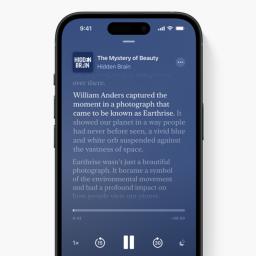 |
by Sarah Fielding on (#6J54X)
Catching up on a new podcast should get easier very soon. Apple has announced that it will automatically transcribe podcasts, which should allow more people to enjoy episodes. Apple Podcast will allow creators to upload their own transcript for display or opt for Apple to create one.There are some caveats to be aware of, though. Apple Podcasts should start creating the transcription when the episode is uploaded. However, it has a "short delay" until it's available, so people eager to play their favorite podcast right away will have to wait for an unspecified amount of time (Apple tells podcasters to give it at least 24 hours after uploading an episode). It's likely that the longer the episode is, the longer the transcription will take to be ready. The transcription will also not update if parts of the recording are changed with dynamically inserted audio, and it won't display music lyrics.Podcasters must follow Apple's quality requirements for their episodes to get correctly transcribed. According to Apple, podcasts with people talking over each other or music might not have as good a transcription. If someone chooses to upload their own, it must be a VTT or SRT file. A podcaster can also edit a transcription for greater accuracy.Apple Podcasts' transcriptions should launch in the spring on iOS 17.4 in English, German, Spanish and French. The feature is available in over 170 countries and regions, with older episodes getting transcribed over time.This article originally appeared on Engadget at https://www.engadget.com/apple-podcasts-will-automatically-generate-transcripts-in-ios-174-091040750.html?src=rss
|
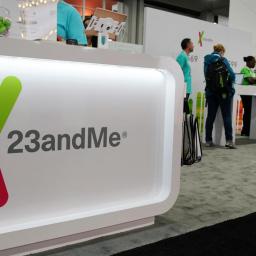 |
by Mariella Moon on (#6J54Y)
In late 2023, genetic testing company 23andMe admitted that its customer data was leaked online. A company representative told us back then that the bad actors were able to access the DNA Relatives profile information of roughly 5.5 million customers and the Family Tree profile information of 1.4 million DNA Relative participants. Now, the company has revealed more details about the incident in a legal filing, where it said that the hackers started breaking into customer accounts in late April 2023. The bad actors' activities went on for months and lasted until September 2023 before the company finally found out about the security breach.23andMe's filing contains the letters it sent customers who were affected by the incident. In the letters, the company explained that the attackers used a technique called credential stuffing, which entailed using previously compromised login credentials to access customer accounts through its website. The company didn't notice anything wrong until after a user posted a sample of the stolen data on the 23andMe subreddit in October. As TechCrunch notes, hackers had already advertised that stolen data on a hacker forum a few months before that in August, but 23andMe didn't catch wind of that post. The stolen information included customer names, birth dates, ancestry and health-related data.23andMe advised affected users to change their passwords after disclosing the data breach. But before sending out letters to customers, the company changed the language in its terms of service that reportedly made it harder for people affected by the incident to join forces and legally go after the company.This article originally appeared on Engadget at https://www.engadget.com/23andmes-data-hack-went-unnoticed-for-months-081332978.html?src=rss
|
 |
by Richard Lai on (#6J52A)
Following Apple's announcement of enabling third-party app stores for iOS users in the European Union, Epic Games confirms that it'll be bringing Fortnite back to the iPhone and iPad in Europe later this year - by way of a new Epic mobile games store. This will mark the title's official return to Apple's platform since it was yanked back in August 2020, after Epic offered discounts to payments made directly to its own store, instead of Apple's App Store and Google Play which would take a 30-percent cut. iOS users have had to rely on Xbox Cloud Gaming or GeForce Now to play Fortnite, but this will soon be a thing of the past for those based in Europe.Fortnite's grand return to iOS in Europe is all thanks to the EU's new Digital Markets Act, which goes into effect March 7. This allows developers to take payments and distribute apps from outside of the App Store, pending Apple's new "Notarization" approval process to spot harmful apps. Apple is also introducing a new fee structure that claims to cost less, if not the same, for most developers who publish to European markets.
|
 |
by Kris Holt on (#6J4SE)
After three years of service, NASA's Ingenuity Helicopter has flown on Mars for the last time. Earlier this month, during its 72nd flight, Ingenuity stopped communicating with the Perseverance rover. Although NASA later reestablished contact with the helicopter, it emerged that at least one of Ingenuity's carbon fiber rotor blades was damaged during a landing on January 18th. The helicopter is upright and is still in contact with ground controllers, but it's no longer capable of flight.Ingenuity far outlasted its original planned lifespan. NASA designed the helicopter to carry out up to five test flights over 30 days. But it stayed in service for over three years. Ingenuity flew over 14 times farther than originally anticipated and it had a total flight time of over two hours.The historic journey of Ingenuity, the first aircraft on another planet, has come to end," NASA Administrator Bill Nelson said in a statement. That remarkable helicopter flew higher and farther than we ever imagined and helped NASA do what we do best - make the impossible, possible. Through missions like Ingenuity, NASA is paving the way for future flight in our solar system and smarter, safer human exploration to Mars and beyond."After Ingenuity's initial five flights, NASA decided to keep the helicopter running as an operations demonstration. It scouted ahead for Perseverance.On January 18, the Ingenuity team planned a short vertical flight so they could pinpoint the helicopter's location after it had to make an emergency landing on its previous jaunt. The chopper reached a height of 40 feet and hovered for 4.5 seconds before descending at a rate of 3.3 feet per second. However, it lost contact with Perseverance when it was about three feet above the surface.It's not clear how the rotor blade sustained damage. NASA's looking into whether the blade struck the surface. Perseverance is too far away to take a look at Ingenuity itself. The chopper's own camera spotted damage on the shadow of a rotor blade.NASA/JPL-CaltechThe hardy helicopter endured tough terrain, a dead sensor, dust storms (after which was able to clean itself) and a winter on Mars. The Ingenuity team will wind down the helicopter's operations after carrying out final tests and downloading the last data and imagery from its memory. After making history as the first aircraft from Earth to conduct a powered, controlled flight on another planet, all Ingenuity can do now is rest easy on the surface of Mars.This article originally appeared on Engadget at https://www.engadget.com/nasas-ingenuity-helicopter-has-flown-on-mars-for-the-final-time-204004656.html?src=rss
|
 |
by Malak Saleh on (#6J4SF)
Shortly after Japan's space agency became the fifth country to land a spacecraft on the surface of the moon, its scientists discovered the Smart Lander for Investigating Moon (SLIM) unfortunately touched down upside down. The Japan Aerospace Exploration Agency (JAXA) said that the SLIM landed on the lunar surface on January 20 but it knew it might have bigger problems due to an issue with power generation. Just hours after making landfall, JAXA expected the power to run out, before it ultimately did.SLIM met the moon's surface about 55 meters east of the original target landing site, JAXA said. The agency did get all of the technical information related to its navigation prior to landing and ultimately becoming stationary on the lunar surface. JAXA captured photos of the SLIM from its The Lunar Excursion Vehicle 2, its fully autonomous robot currently exploring the moon.
|
 |
by Lawrence Bonk on (#6J4SG)
Researchers at MIT have developed a rapid 3D-printing technique that uses liquid metal to allow for extremely fast prints. The process can manufacture large aluminum components in minutes, whereas many pre-existing techniques would take hours to finish the same build. The technology has already been used to create table legs, chair frames and related furniture parts.It's called liquid metal printing (LMP) and involves directing molten aluminum along a predefined path into a bed of tiny glass beads. These beads quickly harden into a 3D structure. Researchers say the new process is at least ten times faster than comparable metal manufacturing techniques.However, there is one major caveat. This process sacrifices resolution for speed and scale. This is why the researchers have used it to create low-resolution items like chair legs and not, say, intricate parts with complex geometries. MIT researchers say this trade-off still makes the technology useful for creating components of larger structures" that don't require extremely fine details. This includes furniture parts, as mentioned above, but also components for construction and industrial design.Despite the resolution downgrade, parts made using LMP are still durable and can withstand post-print machining, like drilling and boring. The folks behind this technology say the builds are much more durable than those built with wire arc additive manufacturing, which is a pre-existing metal printing method. This is because LMP keeps the material molten throughout the entire process, lessening the chances of cracking and warping.The researchers recommend combining LMP with other techniques for jobs that require both speed and a high resolution. Most of our built world - the things around us like tables, chairs, and buildings - doesn't need extremely high resolution", said Skylar Tibbits, a senior author of a paper that introduced the project.It's also worth noting that this printing method doesn't require aluminum. It can work with other metals. The researchers chose aluminum due to its popularity in construction and the fact that it's easily recycled.The folks behind this tech hope to keep iterating on the concept to improve heating consistency, to prevent sticking, and allow for greater control over the molten metal. The team's been having issues with larger nozzle diameters leading to irregular prints, which is something that needs to be worked out. Tibbits said the method could eventually become a game-changer in metal manufacturing."Despite slightly falling out of favor in the commercial space, 3D printing has grown in leaps and bounds in recent years. Researchers have developed a tiny 3D printer that actually gets inserted into the body to repair and clean damaged tissue. Scientists also recently printed a working piece of the human heart.This article originally appeared on Engadget at https://www.engadget.com/mit-researchers-have-developed-a-rapid-3d-printing-technique-that-uses-liquid-metal-194113455.html?src=rss
|
 |
by Pranav Dixit on (#6J4P3)
The Federal Trade Commission is launching an inquiry into massive investments made by Microsoft, Amazon and Alphabet into generative AI startups OpenAI and Anthropic, the agency announced on Thursday. The FTC said that it had issued compulsory orders" to the companies and would scrutinize their relationships with AI startups to understand their impact on competition.History shows that new technologies can create new markets and healthy competition," FTC Chair Lina Khan said in a statement. As companies race to develop and monetize AI, we must guard against tactics that foreclose this opportunity. Our study will shed light on whether investments and partnerships pursued by dominant companies risk distorting innovation and undermining fair competition." The companies have 45 days to respond to the agency.Ever since OpenAI released ChatGPT at the end of 2022, generative AI has exploded, sparking both excitement about its potential to increase productivity as well as anxiety about job losses. Against this backdrop, the world's largest tech companies have been racing to develop their own versions of the tech as well as pouring billions of dollars into smaller startups creating it. Microsoft, for instance, invested more than $13 billion into OpenAI for a 49 percent stake, using the startup's tech to add generative AI capabilities to Bing, its own search engine, as well as Windows and Office. Amazon and Alphabet invested $4 billion and $2 billion in Anthropic, an AI startup that makes a chatbot called Claude.In an opinion column in The New York Times last year, the FTC's Khan wrote that the expanding adoption of AI risks further locking in the market dominance of large incumbent technology firms" and argued for AI regulation.As part of its investigation, the FTC is seeking information about the specifics of Microsoft, Amazon and Alphabet's investments, decisions around new product releases, oversight rights, analyses of market share and potential for sales growth among other details.The US isn't the only country examining Big Tech's ties with generative AI startups. The UK's Competition and Markets Authority said last month that it was examining whether Microsoft's investment into OpenAI was subject to antitrust law.In a post on X in December, Microsoft's president Brad Smith characterized the company's OpenAI investment as a partnership that has fostered more AI innovation and competition, while preserving independence for both companies." Microsoft currently has a non-voting observer seat on OpenAI's board, which, said Smith, was very different from an acquisition."We hope the FTC's study will shine a bright light on companies that don't offer the openness of Google Cloud or have a long history of locking-in customers - and who are bringing that same approach to AI services," a Google spokesperson told Engadget."The U.S. has assumed a global AI leadership position because important American companies are working together," Rima Alaily, Microsoft's vice president for Competition and Market Regulation, told Engadget in a statement. "Partnerships between independent companies like Microsoft and OpenAI, as well as among many others, are promoting competition and accelerating innovation.We look forward to providing the FTC with the information it needs to complete its study."Spokespeople from Amazon and Anthropic declined to comment. OpenAI did not respond to a request for comment from Engadget.This article originally appeared on Engadget at https://www.engadget.com/the-ftc-is-investigating-microsoft-amazon-and-alphabets-giant-investments-into-ai-startups-190939602.html?src=rss
|
 |
by Nathan Ingraham on (#6J4P4)
The Last of Us Part II Remastered arrived last week, and if the cutscene commentary from the game's director, writer and key actors wasn't enough for you, Naughty Dog has another behind the scenes piece coming. Grounded II: Making The Last Of Us Part II, a documentary on the game's creation, will arrive on February 2 at 12PM ET on YouTube as well as in the game itself. There's a trailer in the remastered game currently, and the full documentary will be added via a downloadable patch. That patch will also have some new skins for Ellie and Abby in the main game.The development of The Last of Us Part II was challenging, to say the least -Naughty Dog infamously crunched its employees to get the game done, but it was still delayed multiple times. Plus, key scenes from the game that contained extensive spoilers were leaked just a few weeks before the game launched, and the team also had to content with the Covid-19 outbreak while finishing everything up.Judging from the Grounded II trailer that Naughty Dog released a few weeks ago, it looks like all those topics and more will be added in the documentary - though I wager Naughty Dog will only address the crunch situation in a way that doesn't reflect badly on the studio or Sony. That caveat aside, the previous Grounded documentary that covered the development of the original The Last of Us for the PS3 was a pretty in-depth look at how things work inside a game studio. So while we're certainly going to get a sanitized version of the truth, fans of the game will likely be interested to hear directly how the studio decided to make the controversial narrative choices it did, and how the fallout from the leaks affected the game's launch.
|
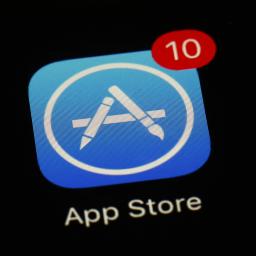 |
by Karissa Bell on (#6J4P5)
Apple is making major changes to the App Store and other core parts of iOS in Europe in response to new European Union laws. Beginning in March, Apple will allow users within the EU to download apps and make purchases from outside of its App Store. The company is already testing many of these changes in its iOS 17.4 beta, which is available now to developers.Apple has long resisted many of these changes, arguing that it would leave users susceptible to scams, malware and other privacy and security issues. But under the EU's Digital Markets Act, which goes into effect March 7, major tech companies like Apple are required to make significant changes to their businesses.In a statement, Apple's Phil Schiller made clear that the company still believes some of these changes, like opening up its App Store, will pose a risk to users. The changes we're announcing today comply with the Digital Markets Act's requirements in the European Union, while helping to protect EU users from the unavoidable increased privacy and security threats this regulation brings," he said.The most significant changes will be for developers, who will be able to take payments and distribute apps from outside of the App Store for the first time. Under the new rules, Apple will still enforce a review process for apps that don't come through its store. Called Notarization," the review will use automation and human reviewers and will be focused on platform integrity and protecting users" from things like malware. But the company notes it has less ability to address other risks - including apps that contain scams, fraud, and abuse, or that expose users to illicit, objectionable, or harmful content."Apple is also changing its often-criticized commission structure so that developers will pay 17 percent on subscriptions and in-app purchases with the fee reducing to 10 percent for most developers" after the first year.At the same time, Apple is tacking on a new 3 percent payment processing" fee for transactions that go through its store. And a new core technology fee" will charge a flat 0.50 fee for all app downloads, regardless of whether they come from the App Store or a third-party website, after the first 1 million installations. According to Apple, the new fee structure will result in most developers paying the company less with less than they currently do, since the core technology fee will have the greatest impact on larger developers.AppleThe updates could bring other significant changes for iPhone users in Europe. Apple will offer new APIs that will allow app makers to access the iPhone's NFC chip for wireless payments, enabling tap-to-pay transactions that don't rely on Apple Pay.It's also making a tweak to its Safari web browser so that iOS users in Europe will be immediately prompted about whether they want to change their default browser the first time they launch the app after the iOS 17.4 update. Additionally, browser developer will be able to use an engine besides Apple's own WebKit, which could lead to browsers like Chrome and Firefox releasing new versions using their own technology for rendering sites. Whether that'll make those browsers faster or better than Safari remains to be seen, but it has the potential to be a major change for one of the most important apps on your phone.Update, 4:30PM ET: Added details about browsers not being restricted to using Apples WebKit technology.This article originally appeared on Engadget at https://www.engadget.com/pple-details-how-third-party-app-stores-and-payments-will-work-in-europe-183931334.html?src=rss
|
 |
by Malak Saleh on (#6J4P6)
New York City has officially become the first city in the US to designate social media as a public health hazard." During a State of the City address, Mayor Eric Adams shared that Health Commissioner Dr. Ashwin Vasan determined apps like Tik Tok and Instagram are considered environmental toxins" that impose harm onto young teens and adolescents. We are going to correct this crisis that is facing our children," Adams said during the address.Social media, the mayor explained, is fueling the growing mental health crisis in the city. This can be attributed to the addictive nature of these platforms, he added. On X, Adams wrote, We won't let Big Tech endanger our kids." However, besides delivering an advisory warning, the city did not clearly explain how it plans to actually curb the risk" of social media use. More details about this designation and plans to implement strategies will be explained in the near future.
|
 |
by Karissa Bell on (#6J4P7)
When I first reviewed the Ray-Ban Meta smart glasses, I wrote that some of the most intriguing features were the ones I couldn't try out yet. Of these, the most interesting is what Meta calls multimodal AI," the ability for the glasses to respond to queries based on what you're looking at. For example, you can look at text and ask for a translation, or ask it to identify a plant or landmark. The other major update I was waiting for was the addition of real-time information to the Meta AI assistant. Last fall, the assistant had a knowledge cutoff" of December 2022, which significantly limited the types of questions it could answer.But Meta has started to make both of these features available (multimodal search is in an early access" period"). I've now been trying them for a few weeks and the experience has been unexpectedly eye-opening about the current state of AI. Multimodal search is impressive, if not entirely useful yet. But Meta AI's grasp of real-time information is shaky at best, often providing completely inaccurate information in response to simple questions.When Meta first teased multimodal search at Connect last fall, my first impression was that it could be a total game changer for its smart glasses. The first-generation of shades Meta made with Ray-Ban looked nice enough, but weren't all that useful. And as much as I still feel weird about saying hey Meta," having an AI assistant that can see" seemed like something where the usefulness might outweigh my own discomfort with having a Meta-enabled camera on my face.After a few weeks of actually trying it, I still think multimodal has significant potential, but whether or not it's actually useful will depend on what you want to use it for. For example, I could see it being incredibly useful while traveling. One of my favorite features so far is the ability to get real-time translations and text summaries.I frequently rely on the Google Translate app's camera-based features while traveling, but it's not always practical to pull out my phone. Being able to look at a street sign or bit of text and say Hey Meta, look and tell me what this says" is actually really useful. That said, the wide-angle lens on the glasses' camera means you have to be fairly close to the text for Meta AI to be able to see it clearly and translate it. And for longer chunks of text, it tends to provide a summary rather than an exact translation so you'll probably still need your phone to decipher things like restaurant menus.Similarly, landmark identification might be a useful feature for travelers, kind of like having an audio guide with you at all times. But the early access version of multimodal search doesn't yet support those features, so I haven't been able to try it myself.Karissa Bell for EngadgetBack at home though, I haven't found many practical uses for multimodal search just yet. It can identify some types of plants, as well as a bunch of other random objects. Right now, this feels like a bit of a gimmick, though if I ever run across an exotic and unidentifiable fruit I know where to turn.I've asked it to write goofy social media captions and have mostly been underwhelmed. Its suggestion for a funny Instagram caption for a photo of my cat (who happened to be laying near an air purifier) was: Purifying the air and napping like a pro. #airpurifier #catsofinstagram." I've tried asking it to help me pick out clothes, like Mark Zuckerberg did in a recent Instagram post, and was also unimpressed. It may work well for a guy who famously wore the exact same shirt every day for years, but I wouldn't count on it for any major fashion inspiration.Karissa Bell for EngadgetOne interesting potential use case I discovered was for recipe ideas. I pulled out some chicken thighs, chicken broth, sweet potatoes, rice noodles, garbanzo beans and tomato sauce and asked Meta AI what I should cook with my ingredients. It suggested a hearty chicken stew" or a healthy chicken stir fry," which seemed like reasonable enough suggestions.As is often the case with AI tools, I had a bit more luck with specific questions. When I showed it chicken and chicken stock and asked it what else I needed to make chicken pot pie, it correctly named two key missing ingredients (though not an exhaustive list of everything I would need). Meta AI was also able to walk me through a very basic recipe for completing the dish.Is this the most practical way to find recipes and get cooking tips? Not at all, especially if youre using the sunglasses rather than the Ray-Ban frames with clear lenses. But as someone who frequently cooks with online recipes and gets frustrated with trying to unlock my phone in the middle of a crucial step, it did make me imagine a scenario where I could get seamless audio cues about what I was doing without turning my attention away from the stove. To be clear, Meta AI isn't able to do anything like that, but it does feel like that's the direction multimodal is going in, albeit slowly.At the same time, Meta AI struggles with real-time information in bizarre, and sometimes worrying, ways. It often gets simple questions completely wrong, and sometimes cites news articles that don't support the answer it's providing..I asked Meta AI more than a dozen times over the course of several days who is the Speaker of the House of Representatives." It didn't answer correctly once. It often insisted that Nancy Pelosi was speaker (this has been false since November 17, 2022.) Sometimes, it stated Kevin McCarthy held the role (also false as of October 3, 2023.) One time, I asked how long Mike Johnson had been speaker and it got that spectacularly wrong too (Johnson has been speaker since October 25, 2023).The company has said its real-time information gathering is powered in part" by Bing, but a question like who is the speaker of the house" is easily answered by the search engine. I asked Meta's comms team to weigh in on what might be going on and I never got a response. But sometime after I reached out, I noticed Meta AI began responding to the question slightly differently (though still inaccurately):Me: Hey Meta, who is the Speaker of the House of Representatives?
|
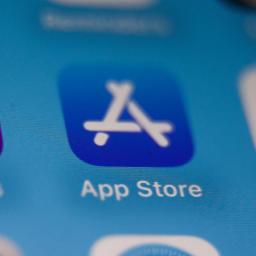 |
by Devindra Hardawar on (#6J4P8)
Apple's app platform is finally opening up a bit. Today, the company said that it will allow developers to utilize new in-app experiences, including streaming games, accessing mini-apps, and talking with chatbots. That means devs can create a single app that houses an easily accessible catalog of their streaming titles. Perhaps we'll finally see a usable Game Pass app from Microsoft (or even its long-awaited mobile game store).The new in-app experiences, which also includes things like mini-games and plug-ins, will also get new discovery opportunities. Apple isn't being clear about what that means, but it could involve new sections of the App Store pointing to specific features. It wouldn't be too surprising to see a collection of apps feature chatbots, for example. Apple also says the new built-in experiences will be able to use its in-app purchase system for the first time (like easily buying a subscription to a specific mini-game or chatbot).The changes follow Apple's recent moves towards opening its ecosystem (mostly in response to pressure from the EU). The company is now letting developers link to third-party payment solutions through apps (of course, it still wants a cut), and it will reportedly charge developers who offer side-loaded apps outside of the App Store."The changes Apple is announcing reflect feedback from Apple's developer community and is consistent with the App Store's mission to provide a trusted place for users to find apps they love and developers everywhere with new capabilities to grow their businesses," the company said in a blog post. "Apps that host this content are responsible for ensuring all the software included in their app meets Apple's high standards for user experience and safety."This article originally appeared on Engadget at https://www.engadget.com/apple-lets-apps-feature-streaming-games-chatbots-and-other-built-in-experiences-180016453.html?src=rss
|
 |
by Lawrence Bonk on (#6J4P9)
Budget electronics retailer Newegg just opened up a program to sell refurbished gadgets. The appropriately-named Newegg Refreshed promises to offer top pre-owned products at competitive prices."The service is already live and is available in multiple product categories, from Apple products like iPhones and MacBooks to GPUs and even robot vacuums. The program also includes laptops, gaming desktops, monitors and all kinds of smartphones and tablets. Newegg has teamed up with industry-leading refurbishing partners" like CTS Warehouse and Back in the Box to provide the stock.The company says that each item is professionally inspected, tested and cleaned before being put back on the digital store shelf. Newegg also offers a guarantee on all refurbished products, giving customers 90 days to return the product.Newegg's pre-existing graphics card trade-in program has also been folded into this service. For the uninitiated, the company offers credit toward new GPUs by trading in old ones, and provides customers with a 14-day window to mail in the new chip. This gives people time to test out the new GPU before mailing in the old one. These traded-in graphics cards will then be moved to Newegg Refreshed to be resold.To celebrate the launch of the program, Newegg's offering customers 15 percent off (up to $150) on refurbished Apple products, though you have to use the buy now, pay later" service Zip and use the promo code rezip." This offer ends on February 28.Newegg touts the environmental benefits of choosing refurbished products, as it reduces waste. With that in mind, this program is a part of a larger industry push toward sustainability. This push includes the sale of refurbished items, but also involves the right to repair movement.This article originally appeared on Engadget at https://www.engadget.com/newegg-just-started-selling-refurbished-electronics-175250892.html?src=rss
|
 |
by Kris Holt on (#6J4PA)
Another former PlayStation 5 exclusive is coming to PC very soon. It's been known for a while that Horizon Forbidden Westwould be Sony's next title to make the leap, and now the company has revealed that the PC version of the game will drop on March 21.This is the game's Complete Edition, which includes last year's Burning Shores expansion (which is next up on my list of things to play). It also has a bunch of additional features for PC, including ultra-widescreen support, unlocked frame rates, DirectStorage and NVIDIA DLSS 3, AMD FSR and Intel XeSS upscaling technologies.Custom graphics options are at your disposal and you can set up mouse and keyboard controls however you wish. Players can expect support for a wide array of controllers, though if you have PlayStation's DualSense at hand, you can take advantage of its adaptive triggers and haptic feedback functions.Sony has brought several of its high-profile games to PC over the last few years as it chases more opportunities for extra revenue. Horizon Zero Dawn, Days Gone, God of War, Spider-Man, Spider-Man: Miles Morales and The Last of Us Part 1 are among the titles that have landed on PC.This article originally appeared on Engadget at https://www.engadget.com/horizon-forbidden-west-is-coming-to-pc-on-march-21-173643297.html?src=rss
|
 |
by Kris Holt on (#6J4JA)
It's happened to pretty much all of us. Unless you're very organized or hyper attentive to your phone's battery life, your device will have died at least at one point while you're away from home or the office. Rather than scrambling to borrow a charging cable or get a top-up from someone else's device, you can nip this problem in the bud by making sure you have a battery pack on hand. Anker is currently running a sale on its battery packs and chargers. One of its products, the Anker 334 MagGo MagSafe battery pack, has dropped to a record low of $31.49 in this sale. It typically costs $45.This pack attaches magnetically to compatible iPhones (iPhone 12 and later). It has a capacity of 10,000mAh, which Anker says is enough to increase video playback time on iPhone 14 by up to 22 hours. It can charge the iPhone 15 Pro 1.7 times over, the company claims. You'll also be able to charge the battery pack via a USB cable and top up your phone's battery at the same time.Elsewhere, some of our favorite power banks are included in the sale, though you'll need to make sure to clip a 20 percent off coupon on Amazon to get the best price. The Anker Prime 20,000mAh 200W power bank is available for a record low of $104.This is our pick for the best premium power bank. It has two USB-C ports and one USB-A port capable of delivering a total charging output of 200W. That means you can charge two laptops at 100W each simultaneously. That 100W charging goes the other way too, so you can fully recharge the power bank in 75 minutes.The Anker Prime is a fairly compact power bank despite its large capacity. It also bears a digital display that provides details on remaining battery capacity, power input and power output.Follow @EngadgetDeals on Twitter and subscribe to the Engadget Deals newsletter for the latest tech deals and buying advice.This article originally appeared on Engadget at https://www.engadget.com/anker-battery-packs-and-chargers-are-up-to-30-percent-off-165838626.html?src=rss
|
 |
by Lawrence Bonk on (#6J4JB)
Porsche just officially revealed the new all-electric Macan SUV, after giving us a little tease last year. Along with the reveal, the company dropped specs, pricing information and an approximate release date.This looks to be a direct rival to vehicles like Jaguar's I-Pace and the Polestar 4. To that end, this is a well-equipped vehicle. First and foremost, the battery is on point, allowing for 381 miles before running out of power. That's Miami to Jacksonville on a single charge, with some juice to spare. It'll be available in two variants: the 397hp Macan 4 and 621hp Macan Turbo. The company promised 600 horsepower and it looks to have delivered, with the Turbo at least. It's worth noting that the range here dwarfs the popular Porsche Taycan EV, though that model's made for speed and not distance.PorscheOn the interior, the EV Macan features three digital displays as part of a robust infotainment system. There's a standard 12.6-inch curved instrument cluster and an 11-inch infotainment touchscreen. The vehicle also offers another 11-inch touchscreen for passengers, to allow them to stream content and adjust controls. The whole platform's powered by Porsche's proprietary voice assistant, which is built on top of the Android Automotive operating system. There's even a dedicated app store, appropriately named the Porsche App Center.You'll also notice a streamlined exterior that looks exceptionally sleek when compared to earlier iterations of the Macan. The rear even boasts a retractable spoiler that automatically adjusts positioning to increase downforce. The front motor was developed by Bosch, but the rear motor was made in-house at Porsche's manufacturing center in Zuffenhausen, Germany.PorscheThere's also a new electronically-controlled traction management system, which Porsche says is up to five times faster than the four-wheel drive system of the existing gas-powered Macan. The vehicle also includes Porsche's Torque Vectoring Plus system, for enhanced steering behavior.The Porsche Macan EV, which is no longer called the E-Macan, will be sold alongside the gas-powered version until next year, at which point the company will sunset the OG model. This is part of the company's promise to transition 80 percent of global sales to electric vehicles by 2030.Porsche should release the car by the end of the year, though it was originally supposed to show up in 2023, so we shall see. The EV Macan SUV will cost $88,600 for the standard model and a whopping $120,000 for the Turbo, according to Autocar.This article originally appeared on Engadget at https://www.engadget.com/porsches-all-electric-macan-suv-boasts-a-381-mile-range-and-up-to-621hp-163940921.html?src=rss
|
 |
by Mariella Moon on (#6J4CE)
In 2021, Meta restricted adults on Instagram from being able to message under-18 users who don't follow them. Now, it's expanding that rule to help protect younger teens from potentially unwanted contact. Users under 16 - or 18, depending on their country - can no longer receive DMs from anybody they don't follow by default, even if they're sent by fellow teens.This new safety measure applies to both Instagram and Messenger. For Messenger, in particular, young users will only be able to receive messages from their Facebook friends or people in their phone contacts. Since this setting is enabled by default, teens who have accounts under parental supervision will need to get any changes to it approved by their guardian. Of course, the setting will have to depend on a user's declared age and Meta's technology designed to predict people's ages, so it's not 100 percent foolproof."We want teens to have safe, age-appropriate experiences on our apps," Meta said in its announcement. Earlier this month, Meta announced that it will start hiding content related to self-harm, graphic violence, eating disorders and other harmful topics from teens on Instagram and Facebook. If a user is under 16, they won't see posts with those topics in their Feeds and Stories even if they're shared by accounts they follow. It also recently rolled out a mindfulness feature that will send "nighttime nudges" to teens under 18 to close the app and go to bed if they've been scrolling for more than 10 minutes.Meta made these changes after being hit by lawsuits and complaints related to how it protects its younger userbase. An unsealed lawsuit filed against the company by 33 states accuses it of actively targeting children under 13 to use its apps and websites and of continuing to harvest their data even after it's already aware of their ages. A Wall Street Journal report also accused Instagram of serving "risque footage of children as well as overtly sexual adult videos" to accounts that follow teenage influencers. In December 2023, the state of New Mexico sued Meta, claiming that Facebook and Instagram algorithms recommended sexual content to minors. And just this month, The Wall Street Journal reported on unredacted internal Meta presentations related to that case. Apparently, 100,000 child users were harassed daily on Facebook and Instagram based on employees' estimates, underlining the need for stricter measures on its platforms.This article originally appeared on Engadget at https://www.engadget.com/facebook-and-instagram-will-block-dms-to-teens-unless-theyre-from-a-friend-130552718.html?src=rss
|
 |
by Mat Smith on (#6J4A3)
The Mac turned 40, putting Apple's longest-running product squarely in middle age. But like someone who sees the back half of their life approaching and gets in marathon-runner shape, the Mac is in the strongest place it's been for decades. While (its own) smartphones have chipped and undercut PC revenues for Apple, it follows years of growth and a major milestone for personal computers: the introduction of Apple Silicon.But before all that, let us take you on a journey through Macintosh, Macs, MacBooks and more, with Nathan Ingraham... who has also turned 40. (A few years ago.)- Mat SmithThe biggest stories you might have missedThe new GE Profile Smart Indoor Smoker is $300 off right nowTesla is reportedly building a compact crossover Google's latest Pixel phone update adds new AI tools and a working thermometerAudio-Technica ATH-TWX7 review: Good earbuds with frustrating flawsYou can get these reports delivered daily direct to your inbox. Subscribe right here!Wired headphones are about to have a mini revivalNew models make any phone Apple Music Hi-Res Lossless ready.It's been over seven years since Apple found the courage to remove the 3.5mm headphone jack from the iPhone, forcing wireless headphones into the limelight. Now, listening to hi-res lossless music on a phone usually means a hunt for a rare handset with a 3.5mm jack.However, a new breed of wired headphone has emerged, and it promises audiophile quality on any phone, with no need for a dongle. Of course, there's a marketing term to go with it: True Lossless Earphones (TLE). James Trew explains.Continue reading.Esports are messy in 2024And our new gaming video series.EngadgetWith the news that Blizzard and ESL FACEIT are preparing to launch a new esports circuit for Overwatch 2, mere months after the death of the Overwatch League, it's a good time to take stock of the entire esports' scene - and introduce our weekly video series, with Jessica Conditt.Continue reading.The Pokemon Company is investigating Pokemon with guns' satire PalworldIt will address products that infringe on its IP.EngadgetThe Pokemon Company knows about Palworld and is very much aware the game is drawing a lot of comparisons with its intellectual property. Palworld, released on January 18, is an open-world game featuring monsters resembling Pokemon, except they can use guns. It also has a darker tone, allowing players to sell their pals" to slavery, kill them and eat them as well as being able to battle them to the death.While the company didn't explicitly name Palworld, it said it will investigate a game released in January 2024" and will take appropriate measures to address any acts that infringe on intellectual property rights related to Pokemon."Continue reading.This article originally appeared on Engadget at https://www.engadget.com/the-morning-after-the-mac-turns-40-121528390.html?src=rss
|
 |
by Steve Dent on (#6J4A4)
Elon Musk has confirmed that a "next-generation low-cost" Tesla EV is in the works and is "optimistic" that it'll arrive in the second half of 2025, he said in an earnings call yesterday. He also promised "a revolutionary manufacturing system" for the vehicle that's far more advanced than any others in the world by a "significant margin."An article yesterday from Reutersindicated that the new vehicle would be a small crossover codenamed "Redwood." Tesla reportedly sent requests to suppliers for quotes, predicting a weekly production volume of 10,000 vehicles. Musk previously stated that the automaker is working on two new EV models that could sell up to 5 million per year, combined."Our current schedule shows that we will start production towards the end of 2025, sometime in the second half," he said on the call. The vehicle will be built in Tesla's Austin, Texas Gigafactory to start with and other locations around the world later. Musk hinted that there would be a strong push to ramp up assembly: "We'll be sleeping on the line practically," he said.
|
 |
by Sarah Fielding on (#6J483)
While many organizations are pushing for their employees to return to offices, Microsoft suggests trying a new type of "hybrid" working. The company has announced the launch of Microsoft Mesh, a feature that lets employees' avatars meet in the same place, even if the actual people are spread out. The virtual connection platform is powered through Microsoft Teams.Microsoft has tested out Mesh on companies like consulting firm Accenture and pharmaceutical-focused Takeda. "The world of work continues to evolve at a rapid pace, but the importance of human connection has never gone away. Lunchtime conversations, hallway catch-ups, coffee chats - they often hold the key to both workplace success and employee happiness," Takeda's chief technology officer Leo Barella explained in a statement. He claims their meetings have been "more collaborative and immersive."Mesh provides a series of pre-made spaces that companies can customize with everything from informational videos to logos - without needing to enter any code. The Mesh toolkit works through Unity, Microsoft's 2D and 3D development platform, to tailor the virtual world further. Basically, if there's a retreat an employer has always wanted to take everyone, they can create a version of it and invite everyone's avatars.Currently, Microsoft's Mesh is only available on desktop PCs and Meta Quest VR devices (if employees want a more immersive experience). Microsoft is offering a six-month free trial to anyone with a business or enterprise plan. Otherwise, prices range from $4 per user monthly for Microsoft Teams Essentials all the way up to $57 per user monthly for Microsoft 365 E5.This article originally appeared on Engadget at https://www.engadget.com/microsoft-launches-mesh-a-virtual-meeting-platform-on-teams-095018763.html?src=rss
|
 |
by Jon Turi on (#6J484)
AlphaTheta has come out of the gate swinging with its release of the Omnis-Duo all-in-one DJ controller and Wave-Eight speaker today. These two products are the first under the company's new moniker since changing it from Pioneer DJ, although both brand names are expected to coexist for now. The launch coincides with the NAMM event this week and it's also the 30th anniversary of the landmark Pioneer CDJ-500.Both the controller and speaker are brimming with connectivity and battery power, making them an appealing option for mobile DJs. Rekordbox is a necessity right now, either for direct play or file prep and the app comes bundled with the Omnis-Duo controller. Serato DJ Lite support is expected later this summer and the software should already be bundled with the product. The Wave-Eight is more flexible and can work just as well with any audio source that has an RCA output.Omnis-DuoThe Omnis-Duo ($1,499) is built to be portable, but also packs in some high-end tech. It's a 10-pound device with fairly reserved and minimal styling that the company says you can fit in a good-sized" backpack given its 20 x 12 x 3-inch in size. There's a two-channel mixer flanked by two jog wheels and eight performance pads under each, although those only work for hot cues and have white LED lighting only. On top you'll find a touchscreen display with an XDJ-style workflow and both light and dark modes. The display is flat and not angled up for easier viewing.Omnis-Duo all-in-one DJ controllerAlphaThetaYou get essential controls for volume, EQ, playback, pitch and dedicated ones for beat jump and beat loop. There are also ones to select eight types of beat FX and six types of sound color FX from, but expect some touchscreen coordination to select which channel to apply to.On the front edge you'll find both 1/4-inch and 3.5mm stereo headphone jacks. The rear panel displays a wide selection of inputs for USB-A, SD cards and USB-C laptop input next to a USB-C charging port that lets you use either a power bank to top up the battery or an AC adapter. When fully charged we're told you can expect around five hours of runtime and the system has an eco mode if things are looking grim.As for wireless connections, there's a novel Bluetooth input option. People can find the Omnis-Duo in their mobile device settings and connect. If they have files on the phone, the DJ should actually be able to select, load and play files in their set with effects and all. It's not entirely clear yet, but the other option is likely just normal playback through the controller from a connected Bluetooth device. This is for one user at a time since multipoint is not supported. There's also a wireless output option for connecting to the Wave-Eight speaker using its SonicLink Bluetooth transmitter which connects to the RCA outputs.And for Wi-Fi connectivity, you can take advantage of CloudDirectPlay to access cloud file storage through a wirelessly connected computer or mobile device running Rekordbox. Additionally, you can use Rekordbox Link Export to directly select and play tracks from a connected device running the app.Wave-EightThe Wave-Eight speaker isn't quite part of a bundled release, it's just a great pairing with the Omnis-Duo, given its portability, battery power and wireless capability. This speaker has an 8-inch driver and what the company calls a Vortex Bass Accelerator" for its output. The 28-pound build includes an extendable handle and casters for luggage-style rolling, plus a couple of convenient grab handles for local lugging.Wave-Eight wireless loudspeakerAlphaThetaYou can mount it on a stand with its pole socket, so it's a proper PA speaker, and it's IPX4 rated, so it's good for the outdoors unless rain really starts coming down. There's an onboard battery that should give you about eight hours of playtime on a charge and it takes about four hours or more of charging to get back to one hundred percent. Obviously you can use it as a powered-speaker all night long if there's an outlet nearby.What makes this speaker interesting is the removable AlphaTheta transmitter with SonicLink technology. Each speaker comes with a transmitter packed into a side panel. They have an RCA input and a USB-C cable. With one speaker, you take the transmitter out and connect it to an RCA output from your audio setup. Then return to the speaker and set it to connect wirelessly via SonicLink. Once connected that way, it should display a green light on the front panel, so you can confirm the status at a distance.If you have a second speaker, you take that one's transmitter and pop it into the first speaker via the USB-C port. That will transmit the audio to the second unit where you set that one to connect via SonicLink (and so on). The speakers support left and right for stereo delivery as well via a channel selector button on the back.To make things more interesting, each speaker has a variety of audio output settings which include Music, Music (Low Cut), Flat, Flat (Low Cut), Vocal and Subwoofer modes. This means each Wave-Eight speaker can be set as a top or sub. You can set one speaker to a low-cut setting and use another one as its subwoofer accompaniment if you like.The SonicLink is said to provide a latency-free listening experience, so there shouldn't be any delay and you can beat match by ear from the output. Of course you can also send audio to a single Wave-Eight via a normal Bluetooth signal and expand to more speakers as you would before. This time, however, you're subject to the normal Bluetooth signal's whims in terms of potential audio delays.Alternatively, we're told there's also an XLR wired input for the speakers, so you're not stuck with wireless connections exclusively. We're also still curious about the Bluetooth range for these devices, but expect that it falls within the normal range of about 30 feet.AlphaTheta has chosen an interesting combo of high-end features, wireless connectivity and battery-powered portability for its premier offering. While they may not be cheap, there's quite a lot built into both products to balance out the equation.The Omnis-Duo all-in-one DJ controller ($1,499) and the Wave-Eight speaker ($899) are both available starting today.
|
 |
by Mariella Moon on (#6J46F)
The Pokemon Company knows about Palworld and is very much aware that the game is drawing a lot of comparisons with its intellectual property, based on a statement it has published. While the company didn't explicitly name Palworld, it said it's going to investigate a game "released in January 2024" and will "take appropriate measures to address any acts that infringe on intellectual property rights related to Pokemon." It also clearly stated that it has "not granted any permission for the use of Pokemon intellectual property or assets in that game."Palworld, released on January 18, is an open-world game featuring monsters that look like Pokemon, except they can use guns. It also has a darker theme, allowing players to sell their "pals" to slavery, kill them and eat them aside from being able to battle them to the death. It has gotten a lot of attention since it was released, and according to its developer Pocket Pair, it sold 7 million copies on Steam alone in just five days.As IGN notes, Pocket Pair previously said that its game is more like Ark Survival Evolved and Vanaheim than Pokemon. In an interview with Automaton, the company's CEO Takuro Mizobe said Palworld "cleared legal reviews" and that there had been "no action taken against it by other companies." The Pokemon Company's statement insinuates that that could change if it determines that the developer has infringed on its copyright, though we'll have to wait for the results of its investigation to know for sure.The full statement reads:"We have received many inquiries regarding another company's game released in January 2024. We have not granted any permission for the use of Pokemon intellectual property or assets in that game. We intend to investigate and take appropriate measures to address any acts that infringe on intellectual property rights related to the Pokemon. We will continue to cherish and nurture each and every Pokemon and its world, and work to bring the world together through Pokemon in the future."This article originally appeared on Engadget at https://www.engadget.com/the-pokemon-company-is-investigating-pokemon-with-guns-satire-palworld-083627388.html?src=rss
|
 |
by Mariella Moon on (#6J45E)
HP Enterprise was infiltrated by a hacking group linked to Russian intelligence last year, the business IT company has revealed in a Securities and Exchange Commission filing. The threat actor is believed to be Midnight Blizzard, also known as Cozy Bear, which was the same group that recently breached the email accounts of several senior executives and other employees at Microsoft. It was also the same hacking group behind the SolarWinds attacks that affected multiple government entities, including the US Treasury Department and Homeland Security. In addition, the National Security Agency accused it in 2020 of trying to steal research on COVID-19 vaccines from the US, UK and Canada.In its filing, HPE said it was notified on December 12, 2023 that an attacker had gained access to its cloud-based email environment. It worked with external cybersecurity experts that found that the threat actor was able to access and steal data from "a small percentage" of email accounts owned by employees from various divisions, including those in cybersecurity. HPE didn't say what kind of data was stolen, but it believes the incident is related to an earlier security breach that took place in May 2023, wherein the bad actor was able to get away with "a limited number of SharePoint files." SharePoint is a document management and collaborative platform for Microsoft 365.HPE spokesperson Adam R. Bauer told AP that the company can't say whether this incident is related to Microsoft's data breach. Bauer also said that the "total scope of mailboxes and emails accessed remains under investigation." So far, HPE's investigation has shown that the attack hasn't had material impact on its operations, but it's still looking into the incident and working with law enforcement.This article originally appeared on Engadget at https://www.engadget.com/hp-enterprise-was-hacked-by-the-same-russian-state-sponsored-group-that-targeted-microsoft-060743999.html?src=rss
|
 |
by Lawrence Bonk on (#6J40R)
Google's rolling out its first update of 2024 for Pixel phones and it brings new health features and AI tools. Perhaps the most interesting new doodad is an actual working thermometer, which is only available for the recently-released Pixel 8 Pro. We knew this feature would come at some point, as the phone includes a temperature sensor and, well, a thermometer's the most likely use case.All you have to do is scan your forehead to see if your headache is just from staring at a screen too long if you have an actual fever. You can beam these results to your Fitbit profile and integrate them with other health metrics.The company's also giving that Tensor G3 chip a workout with the addition of a new AI-powered circle to search tool. It works exactly as advertised. You draw a circle over something on your phone's screen, and the AI will search for the image, text or whatever else you highlighted. This will likely come in very handy in future episodes of spy and detective shows.That's just the first AI-adjacent feature included with the new update. There's something called Photomoji that works exactly as you assume. It turns your favorite photos into emojis or reactions. Magic Compose is like the Magic Editor tool, but for text. Google says the tool crafts stylized, suggested responses with the context of your messages."Finally, there's the recently-teased Quick Share icon that shows you a list of devices nearby you can share content with. Google's actually working to also get this feature included with Windows PCs.GoogleTo accompany this new update, Google's releasing a mint green colorway for the Pixel 8 and Pixel 8 Pro. They look really cute and I sort of want to eat them. The new feature drop starts rolling out today.This article originally appeared on Engadget at https://www.engadget.com/googles-latest-pixel-phone-update-adds-new-ai-tools-and-a-working-thermometer-140006522.html?src=rss
|